www.hookedmagazine.ca



www.hookedmagazine.ca


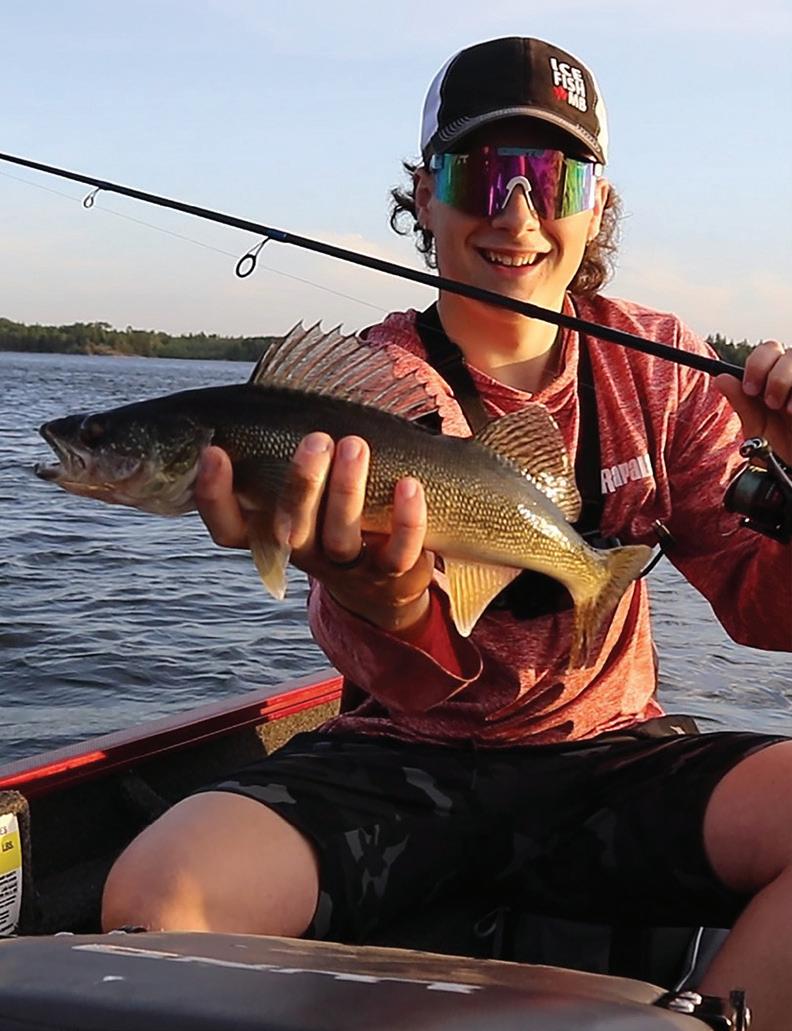
NATHAN BLANK is an avid 18-year-old angler who feels lucky to call Manitoba his home. He grew up fishing at his family cabin on the east side of Lake Winnipeg and became intrigued when he saw people fishing in the area and wanted to try. After trial and error and watching YouTube videos, he became more experienced, and his passion grew. Fast forward two years later, and he is now working at the Fishin’ Hole, sharing his knowledge, making YouTube videos and soon attending post-secondary to become a Fisheries Biologist. “Fishing is like a puzzle with an unlimited number of pieces,” he often says. Growing up on Lake Winnipeg, he fell in love with greenback walleyes and spends scorching summers in a boat and frigid winters in a tent to be in close pursuit of the next trophy.

10 | Being Organized on the Water with Jamie Bruce
18 | Spring Pike Tips with Don Lamont
36| Fun Times on Lake Rainier with Jeff Gustafson
12 | Understanding the Walleye Spawn
14 | Beginner’s Guide to Kayak Fishing
16 | Whiteshell Gold
20 | Saskatchewan’s 100,000 Lakes
22 | Trophy Trio of Last Mountain Lake
24 | Lake Diefenbaker
26 | Saskatchewan Springtime Snows
29 | Impact of Social Media
32 | Jungle Grande
8 | New Products
34 | HuntFishMB Recipe
38 | Content Creator
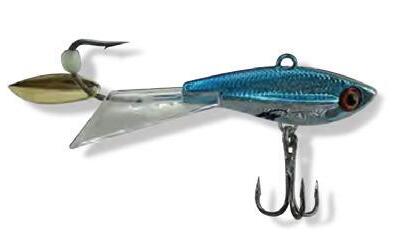
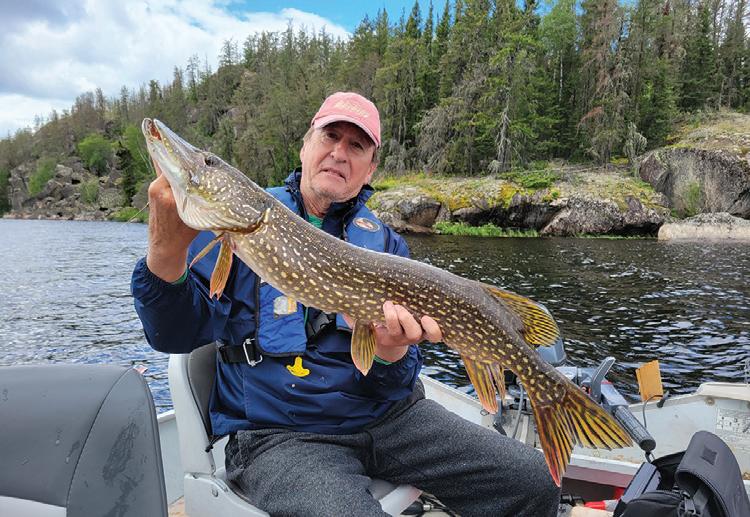
Spring has sprung across the prairies and anglers and hunters are getting back on the landscape.
In this issue of Hooked we feature the great province of Saskatchewan. As some of you might know I got my passion for fishing and hunting while working in Prince Albert, Saskatchewan. I can remember the early mornings going down to the banks of the North Saskatchewan River to catch walleye, pike and the massive goldeye that populated this impressive river.
While I live in Winnipeg now, I always manage to make it back to Saskatchewan a least once a year. I also filmed over 60 of my Complete Angler television episodes in the wheat province so I know just how great the fishing in this province can be.
Television host and writer Wes David of Fishing the Wild West TV visits mighty Lake Diefenbaker. Wes put on some impressive miles to get a great show together for his viewing audience.
One of my favourite lakes in the province lies just north of Regina. Last Mountain Lake is a true gem and friend, and guide Rob Schulz, unlocks its secrets for you.
Saskatchewan also has some great waterfowl hunting, including spring snow geese. Award winning outdoor writer Lowell Strauss outlines the great opportunities that exist for a hunt of a lifetime.
Marcel Laferriere and Keevin Erickson from HuntFish Manitoba take over the Conservation column to write the fine details of how walleye spawn. Just a
well researched piece. We also get to enjoy a recipe by the third part of that team, Josh McFaddin, who shows us how to make walleye salad rolls. I have tried making them and I was not disappointed! They were super good, so thanks Josh.
Of course, our hardcore tournament anglers Jeff Gustafson and Jamie Bruce are on the road again. Gussy is spending the whole spring down south fishing the Bassmaster Elite Series. He brings us up to date on his latest adventures. Jamie Bruce meantime tells us how he prepares his tackle for the long year ahead. Some great tackle tips you will want to read.
Our musky expert, Glenn McDonald talks about the role social media has in his life. As Glenn writes, most seem obsessed with the 50 plus inch Musky. Glenn tells us there is much more to muskie fishing and his efforts on social media than that.
I hope you have a great spring season whatever you are pursuing!
Don Lamont, EditorPublisher
President Kevin Stobbe - 204-771-4041 kevin@hookedmagazine.ca
Editor Don Lamont - 204-292-5234 dlamont46@gmail.com
Design/Production
Nuance Design nuancedesign@shaw.ca
Advertising contact@hookedmagazine.ca
Writers
Nathan Blank, Jamie Bruce, Wes David, Keevin Erickson & Marcel Laferriere, Chris Fonos, Jeff Gustafson, Don Lamont, Dale Martens, Glenn McDonald, Josh McFaddin, Rob Schulz, Lowell Strauss
Cover Photo
Tourism Saskatchewan / Greg Huszar Photography
Hooked Magazine is a member of:


Promotional copies of Hooked magazine are available free at select locations, or you can subscribe to have it delivered to your door and never miss an issue. Subscriptions are $30.00 for 5 issues. Subscribe online at www.hookedmagazine.ca or mail a cheque for to Hooked Media Inc. PO Box 15 RPO Corydon, Winnipeg MB, Canada.
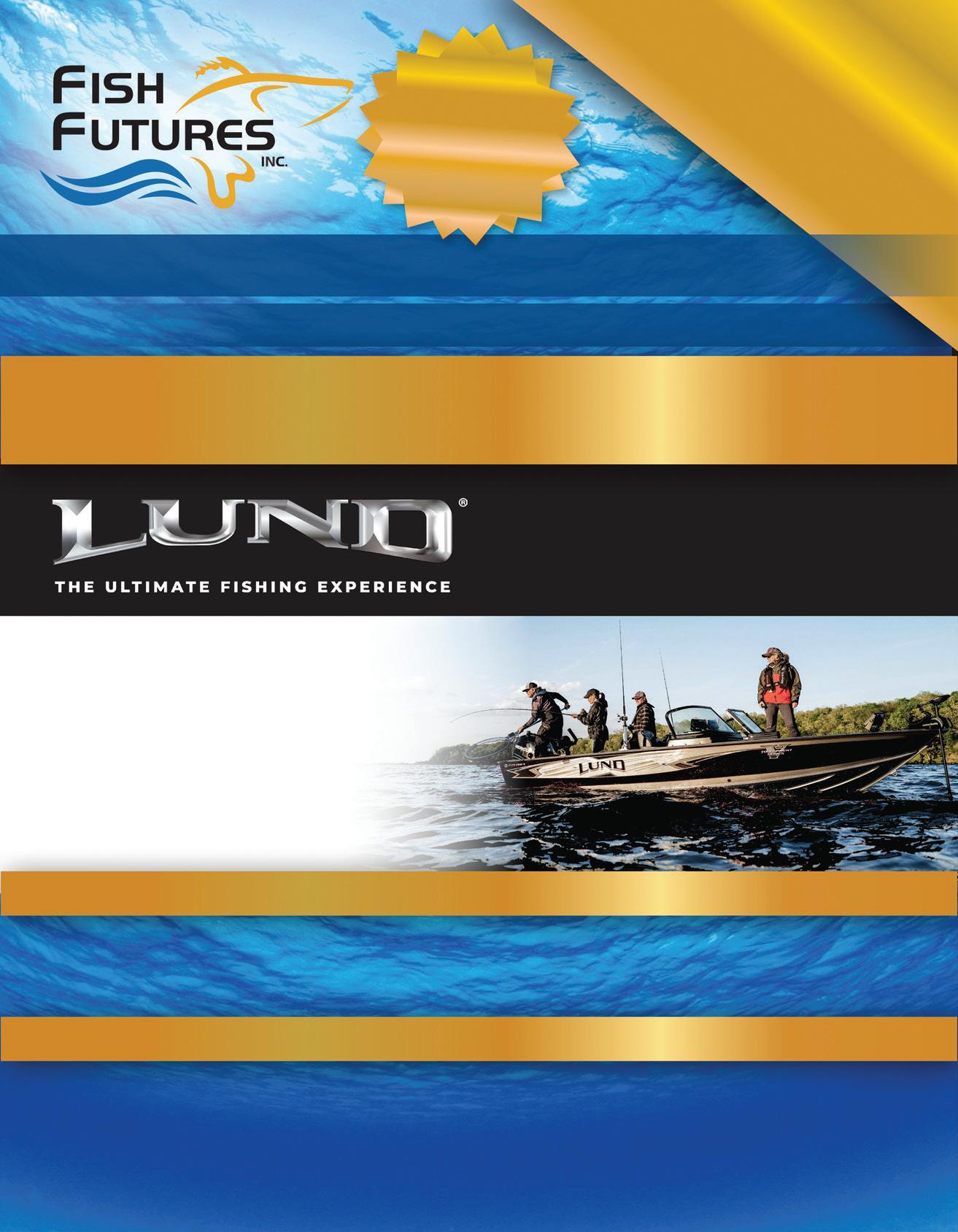
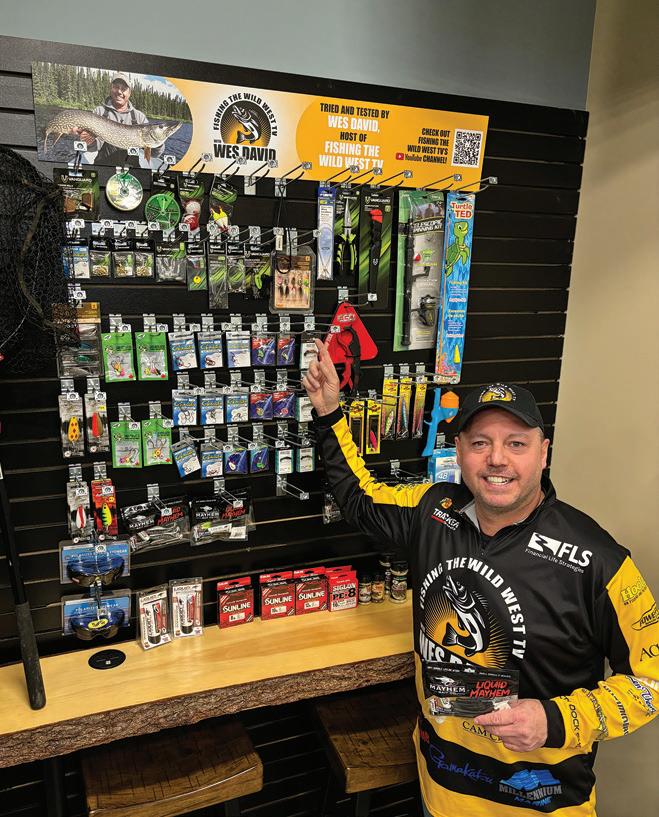
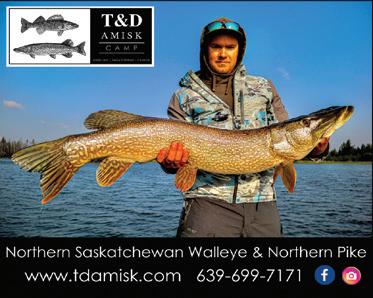
Wes David, host and producer of Fishing the Wild West TV, has joined forces with the distribution company Core-Mark to deliver fishing tackle to Canadians via convenience stores located on the way to bodies of water across the country. Wild TV will begin running commercials on its network this month to inform their extensive national audience that David’s favourite fishing gear, manufactured by companies he currently collaborates with for Fishing the Wild West TV, can be purchased at participating stores starting May 1st of this year. The collaboration between David, Core-Mark and David’s key manufacturer partnerships opens the opportunity for Canadian anglers of all levels to purchase lures and products for the most popular fish species in each region with ease.
David comments on the partnership, “One of my goals when I started Fishing the Wild West TV was to help bring fishing, and the enjoyment of fishing, into new areas and communities and I believe having easy access to fishing tackle will help support that goal. Now you can get fuel, snacks, and fishing tackle on your way to any body of water at participating stores.”
To view air times for Fishing the Wild West TV, go to Wild TV’s schedule or stream Fishing the Wild West TV on Wild TV+
Wes David spends about 125 days on the water each year, fishing, videoing, and researching information for magazines, TV, and conservation efforts. Wes has videoed and written magazine articles covering all freshwater fish species, and fishing for them, and many saltwater species. Articles and videos also cover hunting, wildlife and fisheries, fishing gear, outdoor youth, and future conservation. Wes is a big believer in conservation, educating about Canada’s fisheries and wildlife, and getting our youth involved in the outdoors. For more information, go to WildTV.ca

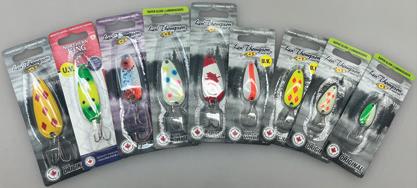
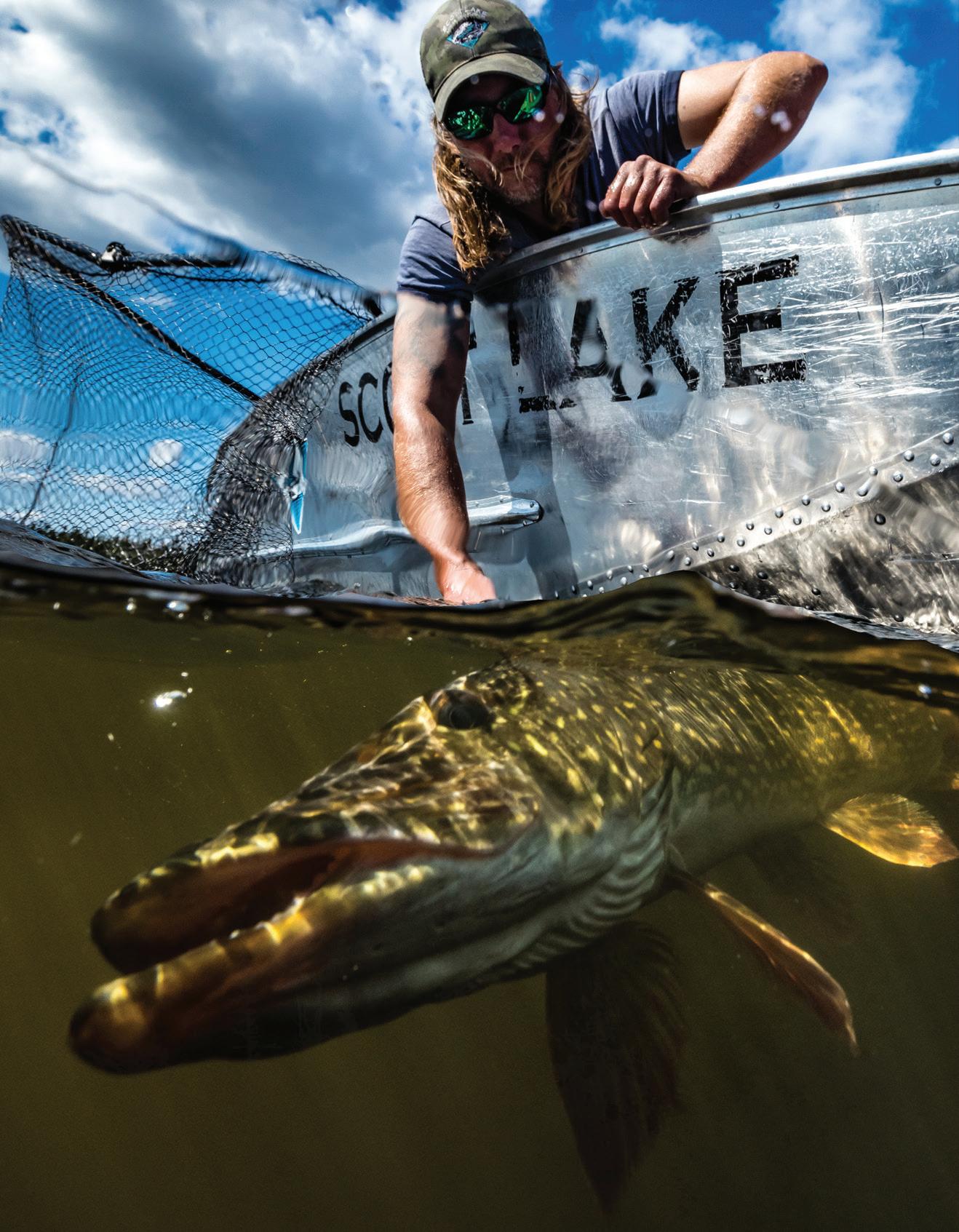
If you wanted a vacation, you wouldn’t be coming to Saskatchewan. You want early mornings, chapped hands, and sore muscles from reeling in a trophy. You want remote lakes with so little pressure they’re growing dinosaurs down there. And you’re going to wake wake up each day making it your mission to catch them.
You want the fishing trip of a lifetime. It’s right here.

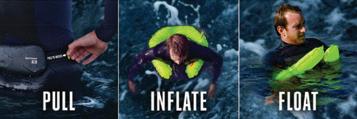

Transport Canada approved and designed for a wide range of water sports the ALTO is an inflatable flotation device worn around the waist. Manually operated, the inflatable tube is released from the waist pack and then supports the user under the arms and around the chest.
spinlock.co.uk
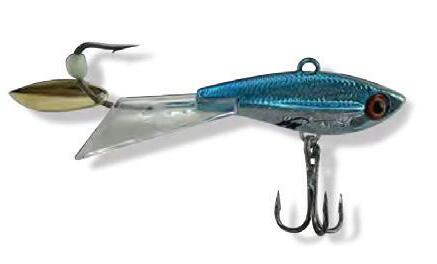
The new PK Ridge Glider has a shad profile that is extremely effective at triggering strikes as it mimics a distressed baitfish while it settles and glides to the bottom. Cast them or jig them fast allowing them to settle and glide upon retrieval. PK Ridge Glider has an oversized rear hook with an added blade for more flash, noise and vibration which creates a unique swim like action. For best results fish with a medium heavy rod along with 10lb nylon braid attached to 15lb fluorocarbon about 2 feet from the lure. pklure.com

For the backyard and beyond, the Thermacell E-series is easy to use and provides hours of scent-free, mess-free mosquito defense. Our most advanced repellent available, the E55 provides a powerful zone of unbeatable area protection from mosquitoes. Features a 5.5-hour battery. 12 hours of mosquito repellent included. Audio cues and LEDs let you know it is working and how much battery life remains. Keep mosquitoes away with the simple push of a button. thermacell.com

The Rapala PXR Mavrik 110 Jerkbait debuts as the first offering in Rapala’s professional-grade PXR lures. A suspending jerkbait, the PXR Mavrik targets bass and other freshwater predators with hardcutting, semi-erratic swimming action! The 110 Mavrik PXR lure is expertly designed to suspend in a head-down position, imitating an injured baitfish – making it the ultimate versatile jerkbait for any and all fishing conditions. With short twitches, the bait can be made to move side-to-side at a slow pace, while a quick snap of the line can expertly make it turn almost 180 degrees! rapala.ca

With structural upgrades achieved through a proprietary blend of high-modulus graphite and advanced resin technologies, the GLX BASS series features rod blanks with boosted strength-to-weight ratios, heightened balance, and pumped sensitivity. Rolled on “stepped mandrels” machined with micro-tapers at specific points within the overall taper, G. Loomis engineers isolate and reinforce areas likely to fail under load to provide maximum durability. In addition to industry-leading break strength, this design innovation also aids in tuning unique flex patterns for technique-specific actions, including the 11 found only in the GLX BASS lineup. gloomis.ca

As the use of braided lines on spinning reels continues to grow in popularity Sunline continues to develop new braided lines for increased efficiency on spinning reels. A sinking braid helps reduce line drift and the bow in your line caused by wind and waves on a cast. This allows it to sink quickly after the cast and to sink more quickly in water to reduce the bow in an angler’s line. This faster sink rate also helps lures fall faster in deep water presentations. Almight has a specific gravity that is 50% heavier than traditional braided lines. By reducing line drift and bow in the line Almight provides an angler with better lure contact for enhanced bite detection. Almight is currently the only sinking braided line in the US market. sunlineamerica.com
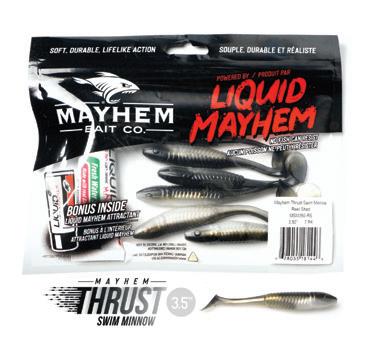

Available in both 3.5” and 5.0” options, our Mayhem Thrust Swim Minnow provides the perfect options for different times of the year. This bait has incredible action and is easy to rig. If you like fishing swim baits, you will love the Mayhem Thrust Swim Minnow. BONUS – Tube of scent attractant in every pack. liquidmayhem.com

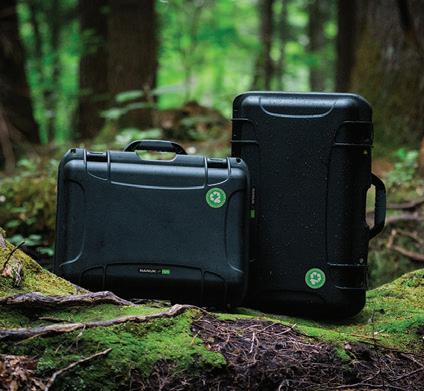
Together, let’s reduce our carbon footprint one case at a time! Introducing NANUK-R, a new collection of cases made from post-consumer recycled resin. We are proud to offer cases that offer the same level of protection, durability and functionality while contributing to the preservation of our environment. nanukcases.ca
Base station of 180 degrees with a telescopic riser that adjusts 18 – 24 inches. Riser tilts 180 degrees and the mounts base fits most monitors. Constructed with anodized aluminum, the monitor mount adjusts 350 degrees! millennium-outdoors.com
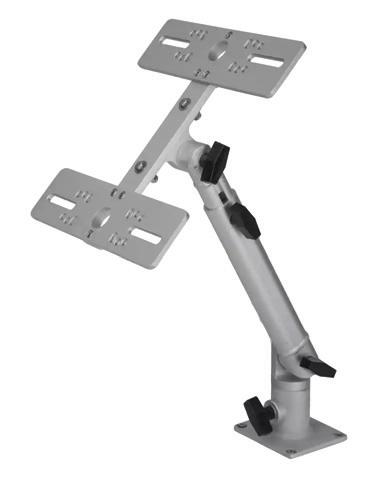
Designed for extreme wet weather protection, the Meridian-X rain jacket is constructed with XPLORE® 2 layer fabric construction and fully taped seams for exceptional waterproofness and breathability. It also benefits from XPEL® plant-based water and stain repellent fabric finish to repel fish blood and guts, and makes for easy and quick cleaning at the end of the day. The 3-way volume adjustment Vortex Hood Technology streams airflow to keep the hood in place when travelling at high speeds, while the high-cut thermal collar provides warmth and comfort when you need it most. Protected by a YKK Vislon front zip and storm guard, you can ensure you stay dry and protected from water ingress. Store your essentials in the large cargo and chest pockets and ensure a watertight defense with the double cuffs and shock cord hem. gillfishing.com
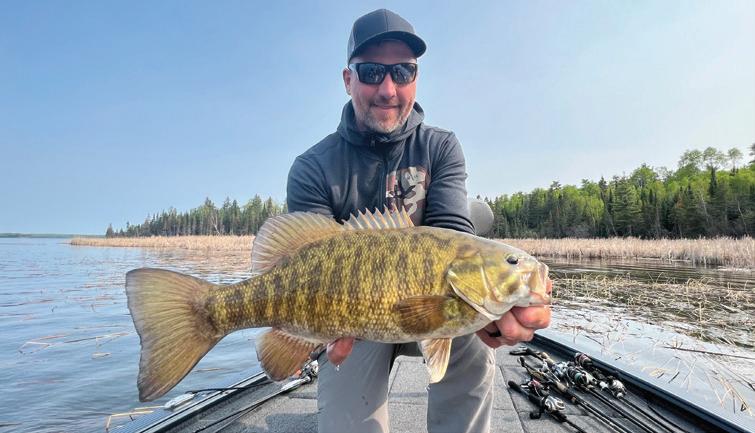
Having organized fishing equipment is often not high on an angler’s priority list, and for some, it comes second to finding and locating fish.
After years of tackle mismanagement, I can tell you a clean tackle system will help your focus and efficiency on the water, and can save you some big bucks in the long run. After travelling all over North America the last couple of years and fishing both bass and walleye tournaments in North America, I’ve really felt the need to simplify my tackle and organize it in a clean and efficient manner. I’ll share a couple of things I’ve learned over the years that may be able to help you out whether you’re fishing competitive events or from the bank.
Rust is the #1 threat to hard baits and jigs, and can wreak havoc on your tackle collection. Rust prevention and water sealed tackle boxes can prolong lure-life a little but are far from perfect systems. The best solution I have come across uses three different methods to keep rust out of your life and maintain your lure finishes while being as organized as possible.
These are growing in popularity the last few years, and it’s for good reason. The foam boxes (I use Rapala RapStack) allow you to organize your jigs and hooks and keep them from being settled in the bottom of a tackle tray, keeping them high and dry from condensation. Even when inevitable moisture enters the trays, the foam will absorb it before it can affect steel hooks. I will
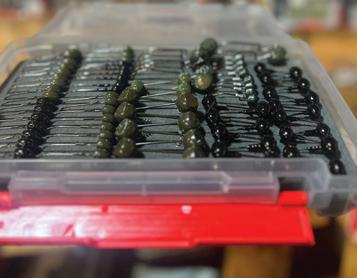
usually make boxes out of jigs and hooks in sizes and styles I know I’ll be reaching for throughout the season. You save time by not having to root through bags and boxes, and when you grab your go-to selection you don’t have to worry about paint chips or other wear from banging around in a traditional tackle tray.
One element that is often overlooked in any tackle tray is the salt content of soft plastics. So many times, anglers will cut off a jig and plastic and fire it right back into the tackle tray. The salty plastic acts like a moisture absorbing sponge and will affect its host hook and any other hooks in the vicinity. If you’re trying to save some money by saving a soft plastic either keep it out in the open or ask yourself if it’s worth rusting you’re jig and the rest of the tackle box for.
2. Rubber-band Hard Baits
I saw this tip probably 12 years ago from tournament legend Alex Keszler, and it still holds true as one of the most effective means of storing and organizing your
hard baits. You simply wrap a rubber band around your treble hooks and lure bill, if applicable, and throw it in a tackle box. You can easily pull your selected lure out without playing the crank bait maraca that we have all done in the past.
I like the deep RapStack trays for my banded hard baits; I can really load them in there, and with the band system I don’t have to worry about a cranksplosion. The more hard baits you can fit in a box, the better off your paint and finish will be. If you only put a few hard baits in a tackle box, you’re giving them the ability to move around and gain momentum to smash into each other. Keep the space to a minimum and they’ll be looking pretty for years.
I put Silica beads in all my hard bait boxes. I’ve never actually purchased any, I just make it a point to collect them from clothing purchases or other shipping packages. These absorb any moisture that enters the tray and take the bullet, so your hooks don’t have to.

For jigs, hooks, and other terminal tackle that I need to haul around, but probably won’t be reaching for daily, I’ll use a bag and box system. I empty everything in to thick (4 mil) plastic baggies, label them with a sharpie, and organize them in the RapStack 3650 deep tray. This has been a proven system for me, and I’ve hauled around tackle for years and years that has maintained it’s finish and integrity; even though some of these items I’m never likely to use again.
Now I realize maintaining and organizing fishing tackle isn’t the most riveting topic, but if you can take something away from this, you should save some money, and more importantly, enjoy your time a little more on the water. n
ONE COULD YOU SURVIVE THE SURPRISE OF AN ACCIDENTAL FALL OVERBOARD? BOATING SEASON THIS WILL EACH DAY DURING DROWN

Wearing a lifejacket is the first step to SURVIVE the SURPRISE. Scan to see what really happens.

 BY KEEVIN ERICKSON & MARCEL LAFERRIERE
BY KEEVIN ERICKSON & MARCEL LAFERRIERE
In Manitoba, walleye are attractive for both catch-and-release and the frying pan. The quality and quantity of Manitoba’s walleye and their host fisheries are well known across North America and for good reason.
However, what’s often celebrated can also be misunderstood. Understanding walleye habits and what they need to spawn successfully is a topic of great importance. Here are some fun facts about the walleye spawn and their behaviour and some information on the aggressive post-spawn walleye bite!
There are many factors that affect and trigger the walleye spawn. Of these factors, the photoperiod and water temperature are kings.
The photoperiod is a crucial signal for the walleyes’ spawning journey from their deeper winter environment to their shallower spawning grounds to begin. The amount of light a walleye is to encounter throughout the day will eventually hit a critical point. This amount of light will trigger an internal signal in the body which initiates the releasing of hormones to begin preparing the walleyes for the spawn. The photoperiod is one of the only factors that allows for an exact date every
year in relation to the spawn. No matter the weather or temperature, the amount of sunlight during a specific time will always be the same year after year.
When thinking about the time frame of when the actually spawning of walleyes occurs. Anglers often refer to certain weeks of the spring. However, what they are referring to is the time of year when the water temperature is generally
suitable for spawning. The temperature of the water is a key ingredient for the walleye to spawn. In Manitoba’s northern climate, this magic temperature is typically around the mid 4-5°C (40° F) range. During a warm spring this 6-9°C (4448°F) range can happen very early in the spring, during the fishing closures across the province. However, in my experience, cool springs can yield waters too cold for

the walleye to spawn right away. This can push the spawn much later into the spring. This will sometimes leave you with pre-spawn walleyes into the early weeks of the reopened angling seasons.
Walleyes have particular preferences when it comes to spawning locations. This differs a lot based on the lake. Typically, there are two types of spawning walleye in a lake: stream spawners and lake spawners. The primary environment for lake spawning walleye is in water shallower than 20 feet with a rocky bottom such as a reef or point. An excellent example of this would be the Canadian Shield lakes found across the province. A secondary environment lake spawning walleye prefer, especially when a rocky shoreline is absent, is sandy beaches. An example of this in the province would be Lake Manitoba. These sandy shorelines have many sand bars throughout, providing excellent protection for the walleye to drop their eggs. For stream-spawning walleye they will migrate to creeks and rivers during the spring runoff to spawn in the rocks and gravel substrates of the waterway. Having both the stream and lake spawning walleyes in the same waterbody is an excellent way to ensure spawning success for the population.
One incredibly interesting fact about the walleye spawn is that the average female deposits around 100,000 eggs at once, and after fertilization, neither the male nor female provides any parental care to the eggs. This just goes to show how relevant natural selection is in the process of walleyes reproducing. They simply deposit eggs, cross their fingers (or fins), and hope as many as possible survive.
The majority of walleyes spawn during the night, and a single walleye will completely spawn out in only one night. Although the migratory spawning journey takes time, the actual act of depositing and fertilizing tens of thousands of eggs happens in only a few hours.
The age and size in which a fish becomes sexually mature is an incredibly important piece to the spawning puzzle. Typically, female walleye mature around the age of 5 and males around the age of 3. This is important to realize with walleye because of their exceptional table fare. While fishing throughout the year, it’s good to keep this in mind when deciding which fish to
In my experience, cool springs can yield waters too cold for the walleye to spawn right away. This can push the spawn much later into the spring.
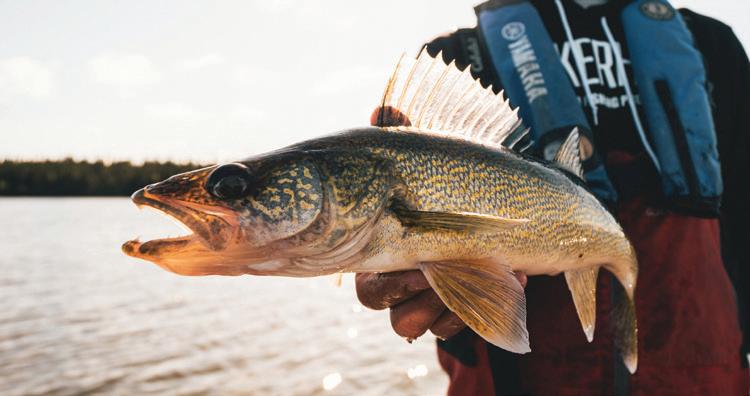
keep and release. Due to natural selection, there are way more immature fish than mature in a waterbody. Therefore, keeping sexually mature fish damages a fishery much more than an immature fish. This is why numerous fisheries have regulations surrounding slot limits.
Many anglers across the province partake in the amazing fishing opportunities for post-spawn walleyes each spring. During this time, these fish are hungry and often quite aggressive. In some of the larger

bodies of water, like Lake Manitoba, there is an epic window of time to target these fish. Following the opening of the spring fishing season in the southern portion of the province. These post-spawn walleyes can be found in the shallows and are accessible to all anglers. One of the biggest perks of targeting these spring walleyes is they will eat just about anything you throw. From jerk baits to crankbaits, spoons to spinners, all the way to a jig and minnow and the famous pickerel rig, These fish will eat them all.
One thing to always remember when

The majority of walleye spawn during the night, and a single walleye will completely spawn out in only one night.
fishing during the spring season is inconsistent spring temperatures. During a colder spring season, many waterbodies can still be in the low 40s for water temperature upon the season opener. This means many of the walleye were still in their pre-spawn phase. In a statement released in 2022 by the Manitoba Conservation Officer Association, anglers were asked to protect fish stocks by releasing any fish discharging eggs back into the water due to the late spring conditions.
So, like in any angling situation, pay close attention to water temperatures. In the spring, they will tell you a lot about what the fish are doing. If you see temperatures still in the low to mid-40s, protect our resources and release fish that are discharging eggs or milt. As the water temperature approaches 50 degrees, the majority of walleye will be in their post-spawn mode and will be ready to eat your lures!
To check out this article on the Hunt Fish Manitoba website, scan the QR code here! n

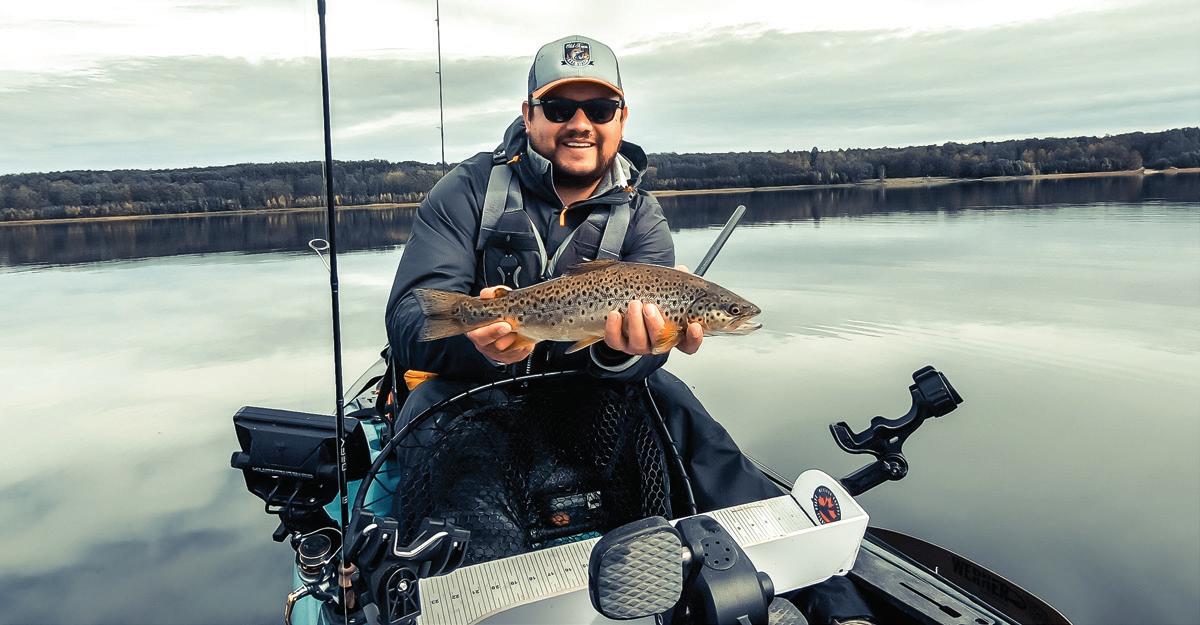
Kayak fishing has exploded in popularity in the last decade but there are many who are still cautious about dipping their toes into the kayak fishing water.
Many wonder if kayak fishing is really that fun, or are hesitant to be on the water without the safety of high gunwales and a big motor. I had these same reservations at first, but after fishing from a kayak for nearly ten years I can confidently tell you that there is no better way to spend time on the water.
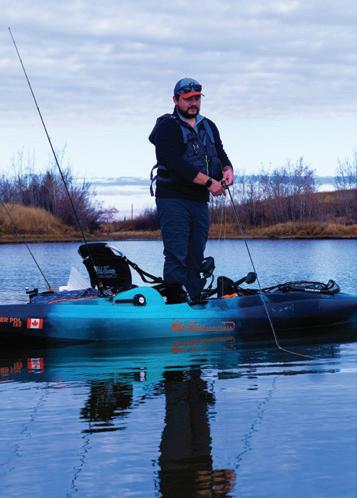
I bought my first kayak because fishing from the shore was getting old. I was tired of back casting into trees and walking miles to a secret spot only to find that someone else beat me to it. I needed to get out on the water but the solution couldn’t be a boat; living in a city meant I didn’t have the storage space, not to mention the price of fuel and maintenance. The cost of a good fishing kayak is a fraction of full-fledged boat ownership and most will fit neatly in the corner of the garage or shed.
Choosing your first kayak is challenge number one. When it comes to fishing kayaks, anglers have never been more spoiled for choice. Just looking at the sheer volume of options available might leave your head spinning, but there are few helpful guidelines I recommend to ensure you are getting the most out of your first fishing kayak.
To start, all good fishing kayaks share one trait in common — they are all sit-ontop models. Sit-on-top kayaks are generally more stable than sit-inside and have a ton of space for all your fishing gear. They will also come with built-in places to mount important fishing accessories, such as fish finders and rod holders.
The next thing to consider is length. In my experience, a 12 foot kayak is the perfect length for nearly any activity. A 12 foot kayak can comfortably handle waves, has an increased weight capacity over smaller 10 foot models, will com -
fortably glide in a straight line while paddling long distances but still remain easily maneuverable.
For width, your kayak should be about 32-36 inches wide. This width of kayaks are stable enough to stand up and fish for most people. The ability to stand and fish is more advantageous than you think — standing increases your vantage point and enables you to sight cast to fish and see further into structure. It also allows you the opportunity to stretch your legs without going back to shore — a definite must when spending long days on the water.
Good accessories can really enhance your experience on the water and, in my opinion, two of the most important accessories are your paddle and Personal Flotation Device (PFD). Consider your first paddle the most important accessory you could buy for your kayak. A quality paddle that is stiff and lightweight makes paddling easy and more enjoyable. Best of all, if the length is adjustable, as most are, it is an accessory that will follow you to the next kayak as well — it may be the only paddle you ever buy.
The other accessory you may only buy one of is your PFD. There are many PFD’s on the market specifically designed for kayak fishing and these are the ones to look for. Most will have fishing-specific features, such as tool holders and knife lash points, but they will also be designed to be comfortable while sitting in highback kayak fishing seat.
One of the hidden benefits of kayak fishing is just how in tune with nature you are. It has been my experience that boats and their motors tend to spook more than just fish.
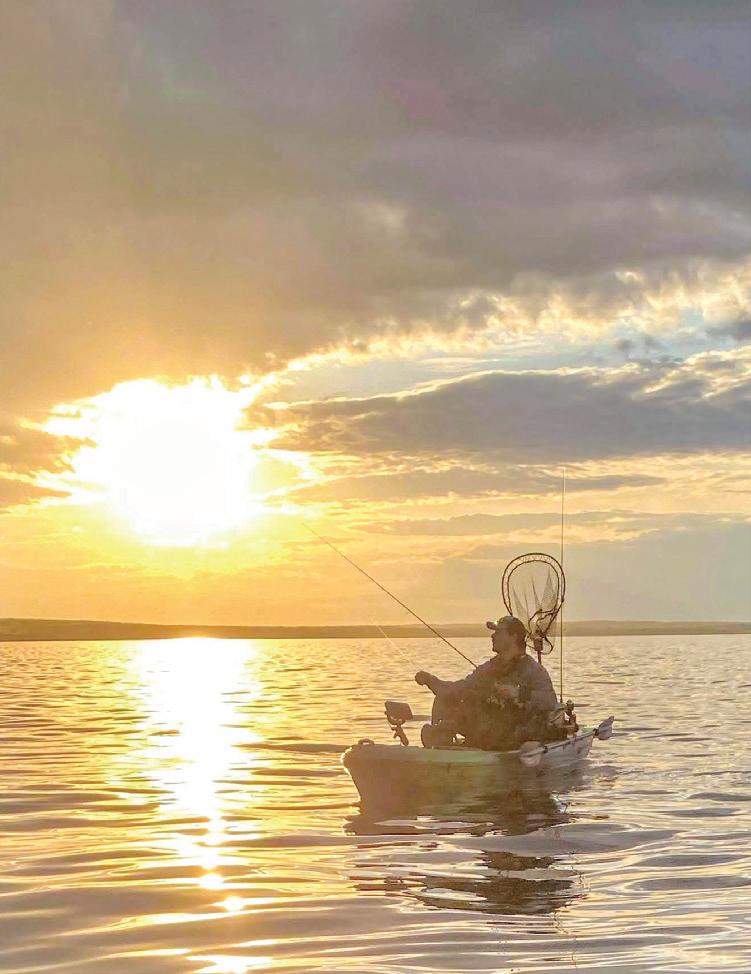
It’s inevitable that you will want to accessorize your rig, but I do have a word of warning about G.A.S. — Gear Acquisition Syndrome. It’s no secret that anglers are attracted to shiny objects, when new gear hits our local tackle shops shelves it’s tough to resist the urge to buy it all up. But be warned, when fishing from a kayak, less is often more. Remember, you are fishing from a little plastic boat so space is at a premium. Having gear strewn all over your deck and accessories hanging off the side can make it challenging to land any size of fish in your kayak. You’re also more likely to lose gear over the side and into the deep. Keep it simple.
One of the hidden benefits of kayak fishing is just how in tune with nature you are. It has been my experience that boats and their motors tend to spook more than just fish. While in my kayak, I’ve had opportunities to be surrounded by nature. I’ve had loons diving for food beside my boat, otters playing along the banks I’m
fishing, and muskrats swimming right up to me — seemingly unaware there could be any threat. Unlike boats, kayaks can just blend into nature.
Kayak fishing is a great way to con nect with nature and fellow anglers alike. As with any new skill, one of the fastest ways to learn is to find a mentor and learn from their experience. If you are a bit nervous or looking for some guidance when getting out on your fish ing kayak for the first time, then look no further than your closest paddle shop. The staff are knowledgeable in all things kayak fishing and can direct you to local kayak fishing clubs, meet-ups and even kayak fishing tournaments.
Given all the models and features available, choosing the right fishing kayak can seem like a monumental task. Although the kayak you choose is a personal choice, no matter what your decision, choosing to spend time on the water is something you won’t ever regret! n


On Spring Walleye
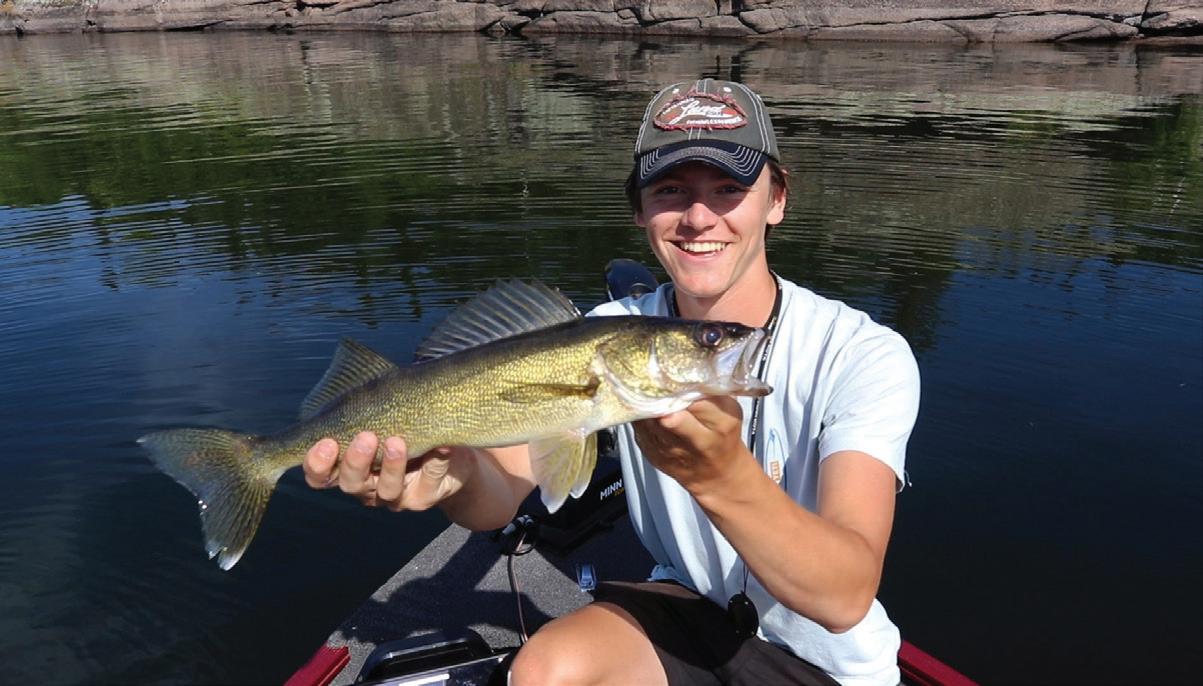 BY NATHAN BLANK
BY NATHAN BLANK
Taking advantage of the Spring fishing is always a must for any angler out there – as fish are still trying to put on some weight from the spawn
My friend Cayden Parisian and I always take advantage of this time of the year to chase after the Eastern region walleyes. We often find them creeping around shallow rock piles near the shore of islands to stay on top of the baitfish. As the days after the early season progress, fish slowly expand from their spawning grounds, but they are not as far away as one would think. After walleye opener this May, Cayden and I decided to head out on Big Whiteshell Lake to see how many fish we could land in the boat. We already had some of our favorite spots mapped out, which had been successful in previous years. We were pre-rigged with what we knew would work, and we were in high spirits to be the first ones out on the water.
A favorite launch on Big Whiteshell Lake is on the south shore, as it has recently been rebuilt and is perfect for unloading and loading boats.
We launched here and after a 5-minute boat ride, we arrived at our desired island. We were using the Humminbird Mega live to scan ahead to look for pods of schooling baitfish, and to see what was hovering over the rocks. We made sure not to spook the school when we trolled just outside the spot, which was about 50-75 feet away from where we wanted to be.
We made long casts towards the shore and did not give much time for the lure to sink, to avoid snagging in between the big shallow boulders. Our retrieve was a series of pops and pauses, normally reeling in the last few yards of line before hitting the boat.
We often did not feel the bite of the fish, but more so a sudden feeling of weight on the line, which we were paying close attention to. Most of the strikes that we had were on the pause, but the more aggressive fish slammed the lure mid pop. It was essential that we always had tight lines, so we could feel the most subtle bites, and be ready to reel in a catch!
I was using a 6-foot 6-inch Extra-Fast Medium Shimano SLX with a 1/4 oz Northland Thumper jig in the silver shiner color, with a 3.75” Zman StreakZ Smoky Shad. We had our reels spooled with 10pound Power Pro with about 3 feet of fluorocarbon leader. A longer leader is
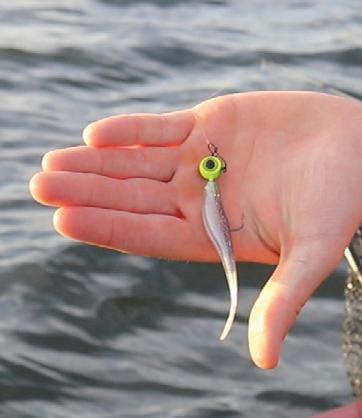
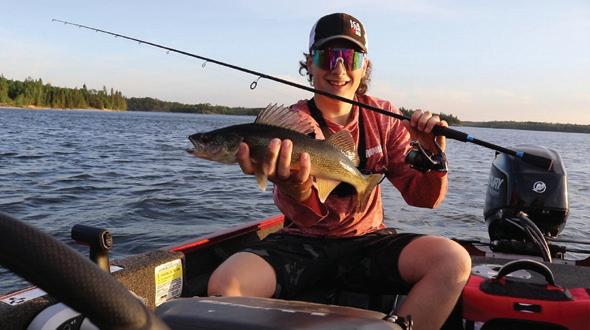
It is important to take care of our fisheries by letting the bigger fish go, and instead take home the smaller ones, preferably those less than twenty inches. On average, a female walleye can carry up to 26 thousand eggs per pound of body weight! Fisheries are susceptible to dangerous declines of populations when the most important fish are removed – which are the big breeders in this case. Make sure to release the fish quickly,
as a prolonged time out of the water only increases the risks of mortality. Also be sure to stay away from fishing waters that are deeper than 25 feet, as anything past that is where barotrauma can kill the fish when they are brought out of the deep waters. By doing our part by making proper judgments of selective harvests for table fare, we can ensure to enjoy some great tasting fish, and memorable days on the water.
essential in clearer water, as the fish will see the braid a lot easier opposed to murky water.
The average size of the walleyes were between 1518”, all of which had full bellies and looked extremely healthy. Some of the walleyes had a darker body than the others, which was interesting in comparison. We did not come across any that looked lethargic or beat up in any way. It was clear that the selective harvest of table fare fish was not difficult to obtain.
Earlier in the morning it was very calm, but we had some “walleye chop” by the afternoon. Which was what we were hoping for, as that means that the baitfish were to be pushed into the shallows, right where we were waiting! Having a taller boat was essential and gave us the high ground to try and spot the big rocks with our polarized glasses.
Overall, we had a memorable day on the water and made sure to take note of our findings and compare it with our past trips to figure out a pattern for next time. In reflection, the only thing we would have done differently is to individually target the bigger marks with Acme Hyper Hammers or Rapala Jigging Raps, as the live imaging would have made it extremely easy for us. Be sure to always keep an eye on your fish finder for any indicators of prime fish habitat, and focus on finding the fish first, before making any initial casts. n

Increasing your odds of catching a toothy beast!
Pike are the first fish to spawn in the spring, moving to shallow bays to lake their eggs as soon as there is open water. The big females don’t stay long, heading out of the bays to suspend or scatter along shoreline points or some other kind of structure.
This all happens when the water temperatures are from 40 to 50 Fahrenheit or 2 to 10 Celsius. Basically, these big females are in full recovery mode from the stress of the spawn. They don’t move much and they like the deeper water for temperature stability.
As the water warms past the big fish will start to slide back to shallower water looking for some food. Once it hits 56 F, they are really starting to get aggressive on the recovery, feeding for long periods of time. As a result this pre summer period is usually when the biggest pike get caught.
If I am out on the water and the temperatures are sill below that magic 56 F mark, I look for the great equalizer. These are incoming feeder creeks that are pumping in warmer water. I can recall several times when I went out searching for these streams and tributaries with great success. All species will congregate in these areas including trophy pike and walleye.
There are several ways to fish this moving water. One is to anchor out on the edge of the downstream pool and throw out slip bobbers rigged with big dead baits on a quick strike rig. This can be deadly but not as much fun sometimes as throwing a big piece of rubber like a six-inch boot tail. I can remember one spring catching back-toback eight pound walleyes on them. These fish are in these pools and back eddies to feed so finesse is not needed. When they move out to a bit deeper and slower water their mood changes to neutral. You then need to switch over to bit more subtle presentation. I have used a variety of soft plastics including a Strike King coffee flavour shad. The more subtle tail action and slow fall and motion can get those neutral fish moving!
A neutral buoyancy jerkbait can also
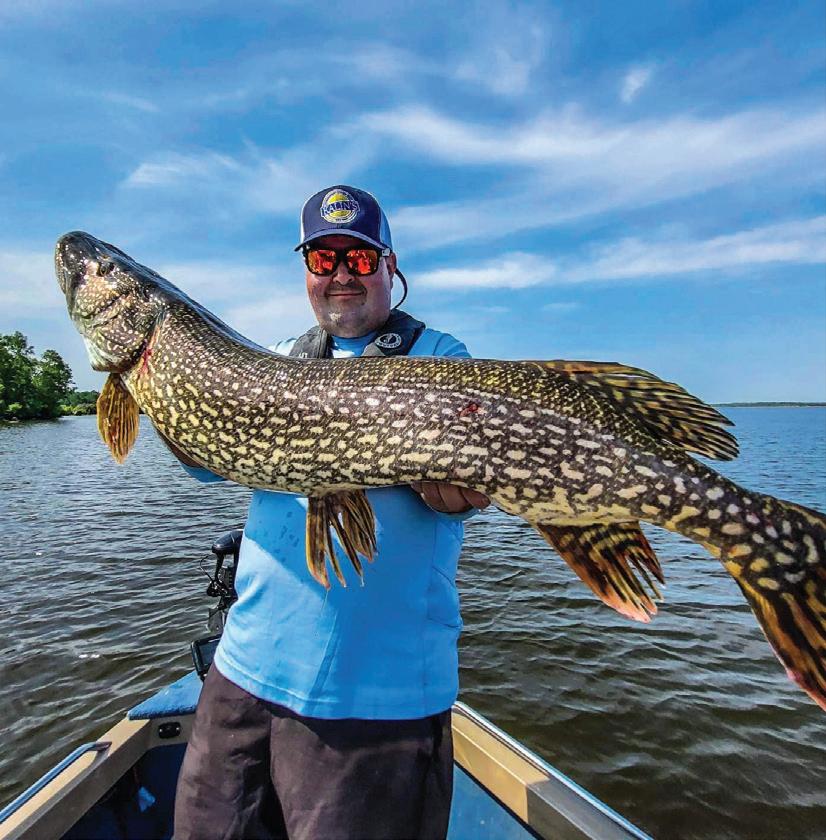
If I am out on the water and the temperatures are sill below that magic 56 F mark, I look for the great equalizer. These are incoming feeder creeks that are pumping in warmer water.
get the job done. Rapala X Rap is always a good choice. Just a slow twitch and stop can trigger the big bite.
When that water temperature hits the magic number of 13.3C (56 F), I will head to the bays hoping to find a bit of developing weed growth or other forms of cover. I can remember one cool spring day on Tobin Lake with friend Russ Heatherington. We headed to one of his favourite bays on the northeast end of this reservoir in search of some active fish. We started out moving around casting spoons and rubber to see if we could find some pods of fish. At this time of year, that is critical because of the nomadic nature of the pike at this time of year. They will move a lot so you have to as well.
We ended up finding them in one small
section of the bay which had a bit of weed growth along with some flooded timber. Anchoring down, we got the slip floats out and proceeded to lay a licking on some big fish, several over the 40-inch mark.
An hour later we had burnt out that area, so we dropped the troll motor and moved out to a bit deeper water. The sun had come out and the activity level had increased.
I then got out the fly rod and streamer. Soon, I was hooked into one fish after another. As we came to late afternoon I finally hooked into a beast. Unfortunately, I had forgotten my net and while Russ tried to hand land it, the pike rolled and the barbless hooked came out. Still, we had it all captured on film and it was a memory of a lifetime.
Over my forty some years of chasing across the prairies and Northwest Ontario I have rated my favourite pike fisheries.
TOBIN LAKE
It is crazy how many big pike exist in Tobin Lake. I can remember days when

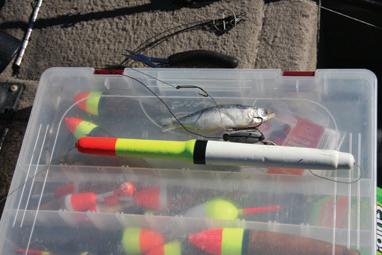


we didn’t catch a pike under ten pounds. A huge population of ciscoes makes these fish grow at an incredible rate. There is a protected slot size for northern pike. No fish in the 75cm (29.5 in.) and 115cm (45.3 in.) may be taken.
LAKE DIEFENBAKER
This huge reservoir produces huge fish in a variety of species but this pike fishery often gets overlooked for walleye and rainbow trout.
LAST MOUNTAIN LAKE
The same story goes for the Mountain, the big pike are overshadowed by the outstanding walleye fishery. Friend Rob Schulz guides on Last Mountain and he is always producing monster pike for his guests. Read more about Last Mountain from Rob himself starting on page 22.
CEDAR LAKE
I have two favourites in my home province. My first choice is Cross Bay on the Cedar Lake chain. Two lodges here provide great accommodation and access.
My favourite pike bay is right across from Moak Lodge, a short two-mile boat ride.
LAKE OF THE PRAIRIES
Three years ago while fishing with friends in September I caught one of my largest pike ever, measuring with 45.5 inches and weighing close to 30 pounds. The best time to fish this reservoir is from the third week in May to the middle of June. These pike are shallow and hungry.
LAKE OF THE WOODS/SHOAL LAKE
There is plenty of water to fish and while Shoal Lake doesn’t really produce monster pike, they sure kick a lot of fish out in the 10-to-12-pound range. And they are everywhere!
EAGLE LAKE AND VERMILLION BAY REGION
While the musky season remains closed until the third week of June, there is plenty of big pike that will chow down on good sized baits. Check out this beast above right. Adam Mueller, of Top Line Baits, out of southern Ontario visited the area and fished with Dave Bennett. Their main
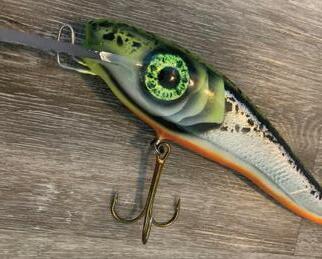
When I fish for shallow pike in heavy cover, I use my 10 weight fly rod and a 30 pound fluorocarbon leader. Make sure you have a large capacity fly reel with smooth drag. I have only had one pike over 50 inches on the end of my line. It was up at Nueltin Lake a few years ago and I had this beast on that fly rod setup. Things were going well until it saw the boat and headed in a beeline for shore. Unfortunately, I had a ton of fly line on the floor of the aluminum boat and it caught on a rivet. The sound of my line snapping was like a gunshot. Moral of the story, bring a basket for your fly line when fishing for big, toothy creatures, especially on fly in trips. Catching pike on a fly rod for me is the ultimate angling thrill.
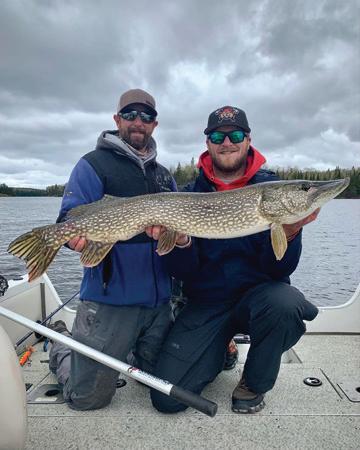
target was early season pike. Using lures from Adam’s bait company, they got into a fantastic pike bite. Even early season walleye were attacking the large twitch baits.
RAINY LAKE
On the other hand, its neighbour to the southeast does have mega sized pike. Rainy has plenty of smelt to grow those big pike and there are plenty to be had. n
hile they may call it the Wheat Province, it is also a paradise for those who love the outdoors. It has some of the best fishing and hunting in the world.
beautiful trout streams of the Cypress Hills. While these fish can be hard to get to there is some spectacular fishing on a fly to be had.
up of licensed professional outfitters. Their members are experienced outdoors people, eager to ensure a top-quality experience in the province of Saskatchewan.
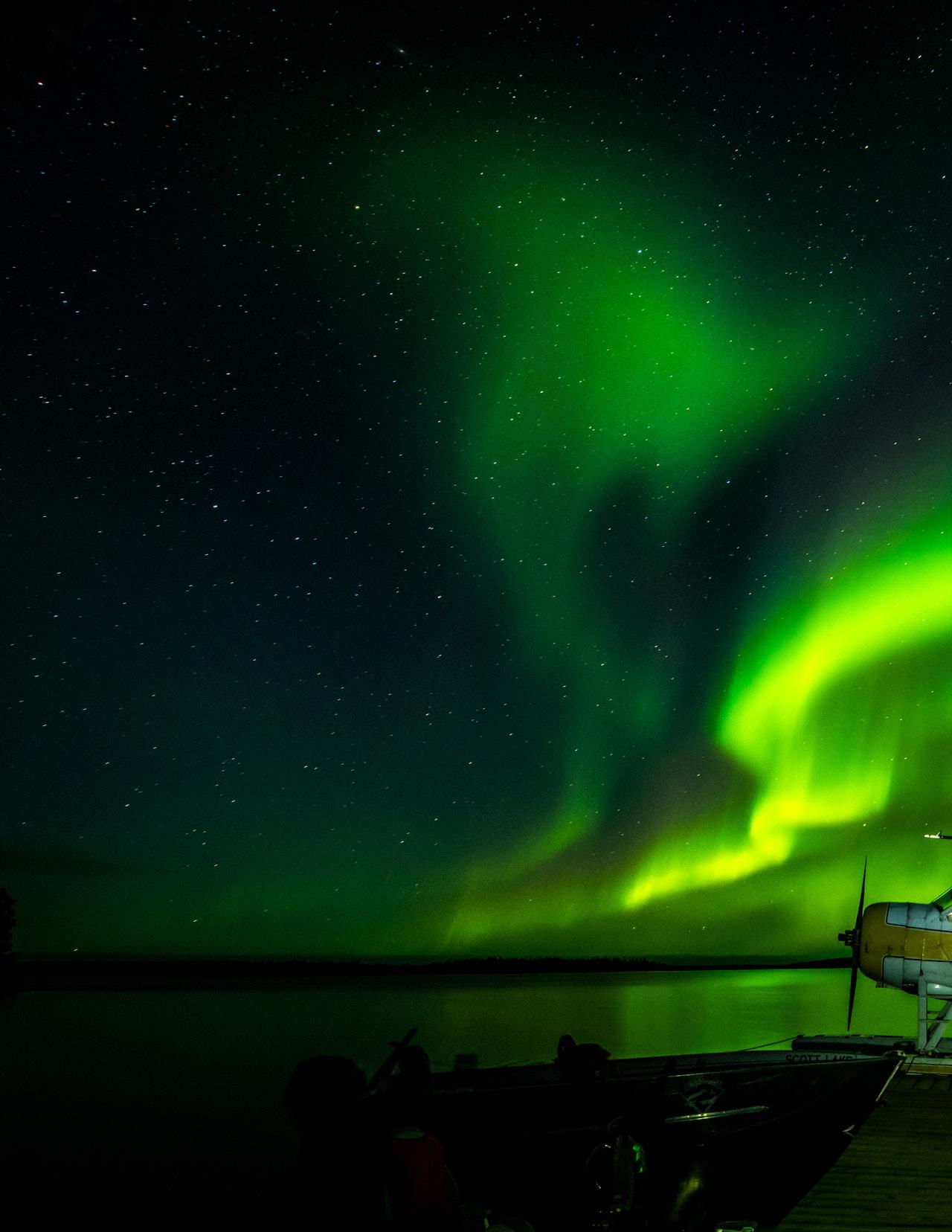
Over the last 40 some years I have got to explore most of it, from the flatland prairie lakes and reservoirs of the south to the spectacular fly in fishing of the north. Never mind the incredible diversity of lakes and massive reservoirs spread across the central part of the province.
The southern part of the province offers the most angling diversity of probably any other area. Extreme southern Saskatchewan is fortunate to have easy drive to fishing for walleye, pike and perch. Rafferty Reservoir and the newly named Grant Devine Lake, also known as Alameda Reservoir. The City of Estevan also has Boundary Dam which boasts great fishing plus largemouth bass.
These lakes host very healthy populations of walleye, pike and perch, eaters, and trophy size. Prairie Pro Outfitters operates on Rafferty Reservoir and holds the guiding rights to it. They operate out of Mainprize Park and their website highlights the operation.
On the opposite page is a 34-inch, 14 lb walleye, that was caught and released by Michelle Smart of Prairie Pro Outfitters.
I can remember one spectacular day while filming an episode of m Complete Angler television show a few years ago. I caught numerous large bass relating to sunken timber, a day etched in my memory forever.
Then there are the lakes of the Qu’Appelle Valley with good populations of walleye, pike and perch not to mention carp and catfish.
In southwestern Saskatchewan you find the
Once you get north of Regina, you find one of the best walleye fisheries in North America, Last Mountain Lake.
Outfitter and friend Rob Schulz tells you all about it on page 22.
Of course, there is mighty Lake Diefenbaker that stretches from Saskatchewan Landing to just southwest of Saskatoon. Wes David, of Fishing the Wild West TV fame got a chance to fish it this year. You can read all about it on page 24.
As you head north of Saskatoon toward Prince Albert and Nipawin you have one of the top three walleye and pike fisheries in western Canada. Tobin Lake has been kicking out monster fish for years and it hasn’t slowed down. West of Prince Albert there are some hidden gems like Chitek Lake, then a whole pile of good water in Meadow Lake Provincial Park.
You can choose from the ultimate five star adventure or the remote fly-in outcamp were you have the lake all to yourself. Many of the northern lakes have lake trout that grow to massive proportions. For those looking for giant fish, the northern pike are still the number one sport fish for anglers who head to the upper half of Saskatchewan. Strict size restrictions and barbless hook regulations make sure it stays that way.
The Saskatchewan Commission of Professional Outfitters (SCPO) is an industry-driven, not-for-profit association made
For more information on where to go for fishing and hunting adventures visit the Saskatchewan Commission of Professional Outfitters website at scpo.ca Use their “Find an Outfitter” to search for a hunting or fishing adventure by region, species, or camp type.
For all adventures in the province visit the Tourism Saskatchewan website at tourismsaskatchewan.com.


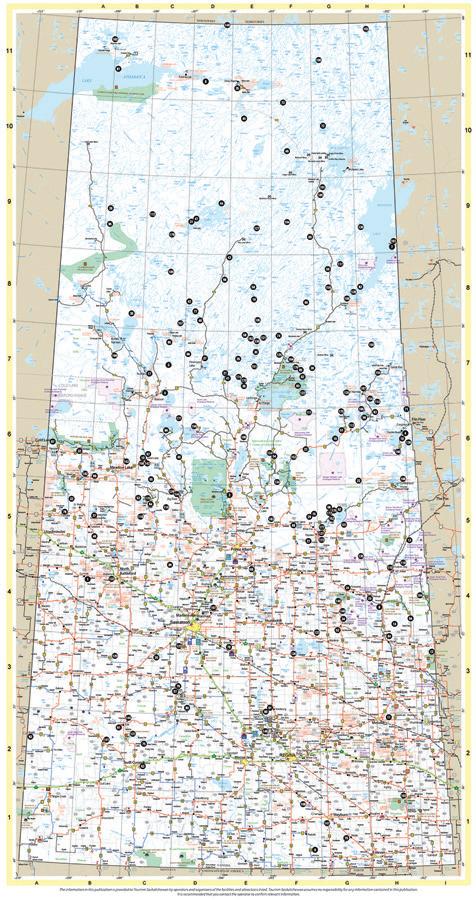
Imagine a place with so many lakes and rivers that solitude is almost guaranteed. Wild, untouched wilderness with world-class fishing and hunting opportunities. You are sure to find the tranquil beauty and warm hospitality that Saskatchewan is known for. Scan the QR code here to access information on the Hunt & Fish Outfitters across the province.
Photo by Brian Grossenbacher, courtesy of Tourism Saskatchewan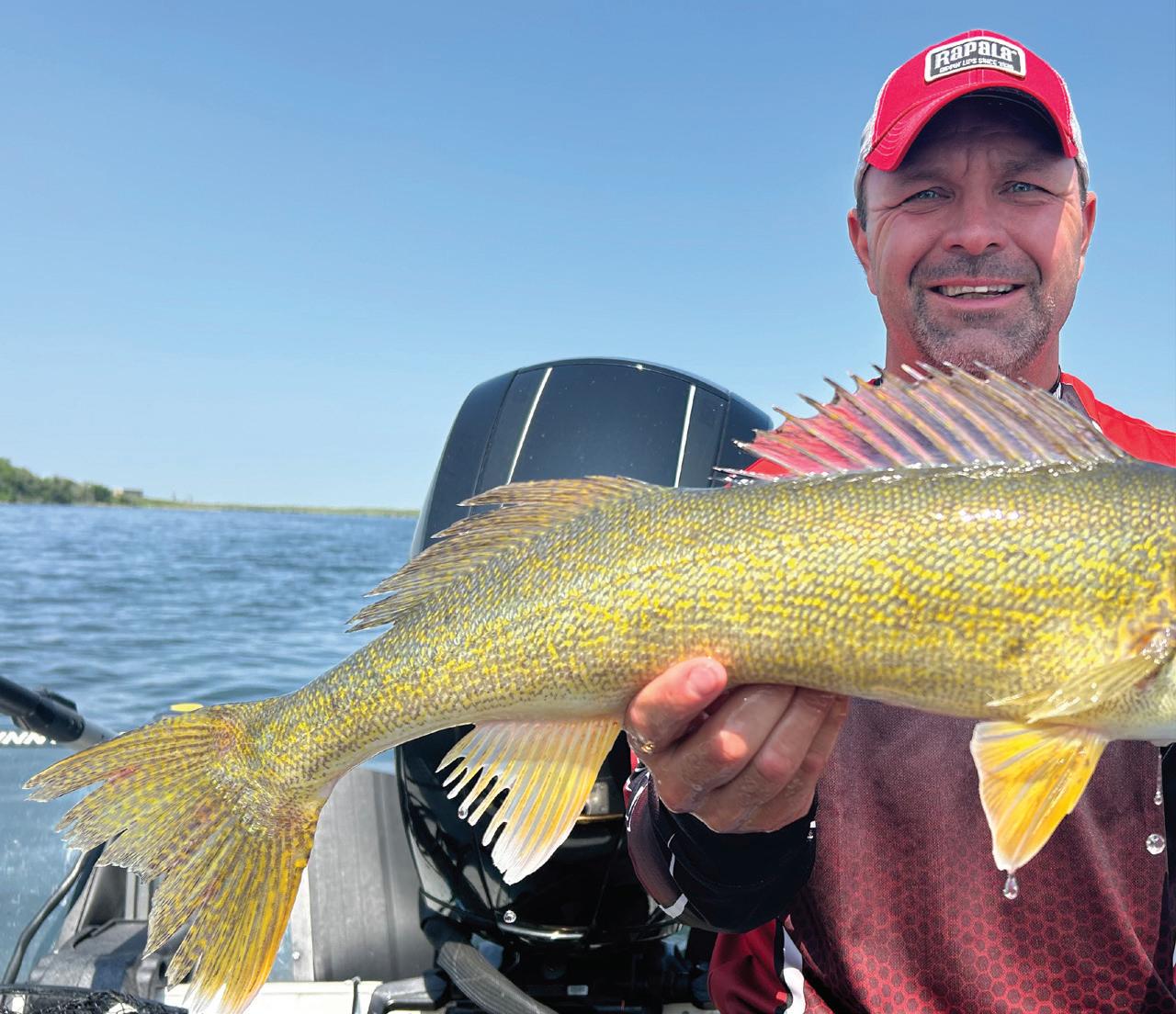
Nestled amidst Saskatchewan’s picturesque landscapes, Last Mountain Lake boasts a rich ecosystem supporting a diverse range of fish species. Among these, three stand out as true trophies for the seasoned angler: Walleye, Northern Pike, and Carp.
Walleye: The Elusive Prize Walleyes thrive in the depths of Last Mountain Lake, offering anglers a world class angling opportunity, one of the Big Three walleye lakes in the province. These golden-hued beauties are prized not just for their fight but also for their delectable flesh, making them a favorite among recreational and culinary enthusiasts alike.
Last Mountain’s Walleye are renowned for their size, with specimens exceeding the coveted 10-pound mark not uncommon.
G&S Marina Outfitters has long catered to walleye enthusiasts, offering prime locations and expert guidance for those seeking to reel in their personal best. From traditional jigging techniques to trolling along the lake’s expansive stretches, anglers can explore various methods to get the fish of lifetime.
Northern Pike: The Predatory Giant Venture into the weedy shallows and hidden coves of Last Mountain Lake, and you’ll encounter the majestic Northern Pike, an apex predator revered for its strength and predatory prowess. With its
distinctive markings and formidable teeth, the Northern Pike presents an exhilarating challenge for anglers seeking adrenaline-pumping battles on the water.
Casting oversized lures or presenting baits near weed beds and drop-offs can entice these voracious predators, rewarding anglers with memorable encounters and prized trophies.
Carp: The Unconventional Gem While often overlooked by traditional anglers, Last Mountain Lake’s Carp population offers a unique angling experience unlike any other. These bottom-dwelling behemoths may not possess the glamour of their sportfish counterparts, but their sheer size and tenacity make them worthy

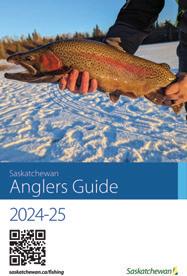
Get all of your fishing info in one spot at saskatchewan.ca/fishing. An online guide, tools and tips are available for your Saskatchewan fishing adventures. Have a question? just Call 1-800-567-4224 or email centre.inquiry@gov.sk.ca
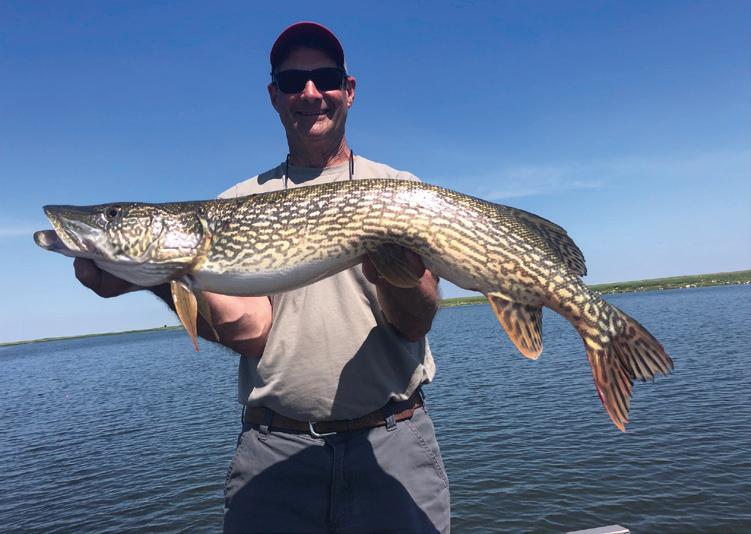
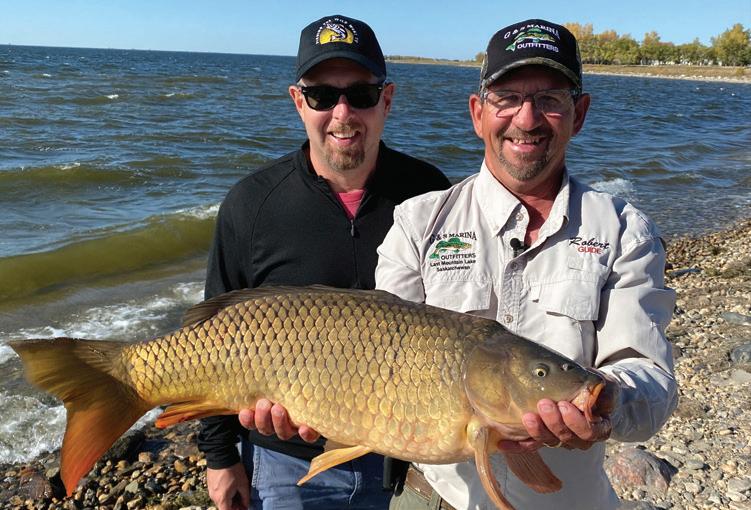
adversaries. Carp exceeding 30 pounds are not uncommon in these waters, providing anglers with a chance to test their skills against raw power and endurance.
G&S Marina Outfitters welcomes anglers looking to target Carp, offering insights into specialized techniques such as bottom fishing with boilies or methodically presenting maize rigs. Patience and strategy are key when pursuing these elusive giants, with each successful Carp landing marking a significant achievement in the angler’s journey.
As custodians of Last Mountain Lake’s
natural wonders, it’s imperative that we approach fishing with a mindset of conservation and sustainability.
G&S Marina Outfitters advocates for selective harvest, ensuring future generations can continue to enjoy the thrill of pursuing trophy Walleye, Northern Pike, and Carp.
Join us at G&S Marina Outfitters as we celebrate the diverse bounty of Last Mountain Lake and embark on unforgettable angling adventures, where each cast holds the promise of encountering a trophy-worthy specimen.
Let the waters of Last Mountain Lake be your playground, and let the thrill of the catch be your reward. n


An angler’s paradise from one end to the other!
It had been over 15 years since I last fished Lake Diefenbaker, but it has always been a lake I wanted to return to and fish again. Lake Diefenbaker was formed by the construction of the Gardiner Dam and the Qu’Appelle River Dam across the South Saskatchewan River creating the reservoir we now know as Lake Diefenbaker. Construction began in 1959 and the lake was filled in 1967.
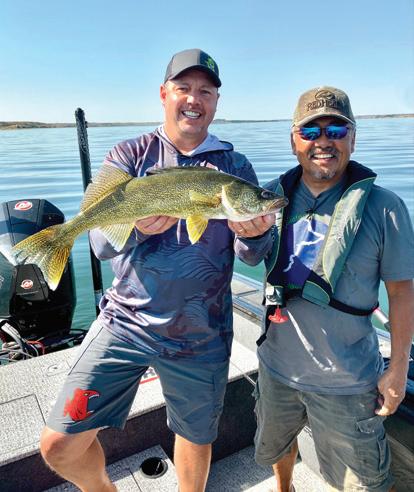
Lake Diefenbaker is a large water body stretching a little over 225 km (140 miles) long with approximately 800 km (500 miles) of shoreline. There are 26 different native and stocked fish species swimming within the depths!
With that, an angler knows that a lake or reservoir this large, with endless structure and fish habitat, is going to host some amazing fishing opportunities.
In August 2023, we booked two nights in Elbow, Saskatchewan at Sarah’s Cove Condo Rentals and launched at the Lakeside Marina. I was fishing with my good friend Tom Koizumi, a long-time tournament and Lake Diefenbaker angler.
We were targeting walleye and quickly found schools off points and sharp dropoffs, in 16 to 23 feet of water. To our surprise, even during the heat of the day, we also found walleye in seven feet of water and even the odd walleye as shallow as four feet in large cutouts along the shoreline. I believe the walleye were chasing bait into the shallows and holding on the mud and sand flats picking the bait off as they tried to retreat from the shallows to deeper water.
Walleye would bite a jig tipped with a frozen minnow, vertically jigged in the deeper water or slowly crawling the



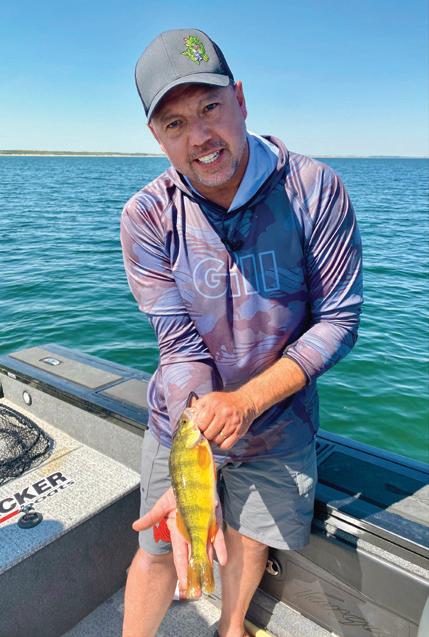
bait along the bottom in the shallows. However, the bulk of our bites came while bottom-bouncing a Sure Death pink blade from PK Lures behind a 2oz bottom-bouncer weight. This presentation also produced some of our larger walleye.
We would run the boat at .8 to 1.1mph in a zig-zag pattern across the flats and on/off structure. The zig-zag pattern would allow the blade to change the speed of the bottom-bouncer blade to spin faster on outside turns and slower on the inside turns.
The hook was tipped with either a leech, frozen minnow, or a Liquid Mayhem 4-inch soft plastic. Throughout the day, one bait would produce more bites than the other and the key was to change out your bait as soon as the bite turned off. Walleye and Lake Diefenbaker’s healthy population of sauger would take the slow-moving presentation with a subtle bite. In most cases, we wouldn’t feel the bite, just the weight of the fish on the end of our line. However, once they realized they were hooked, the fight was on.
We spent two days fishing at the Elbow end of the lake with incredible walleye and sauger fishing. On the third morning, we loaded our gear and trailered the Tracker boat crossing on the Riverhurst ferry to the Village of Riverhurst. Here we
booked into one of the 2-bedroom cabins at Mainstay Inn. Before long we were on the water and turned our attention to trout fishing.
If you’re an avid anger, then there is no doubt you know about the abundance and quality rainbow trout that call Lake Diefenbaker home. We spent several hours targeting rainbow, including fishing near the trout farm where over 400,000 trout escaped from the nets in May of 2000. However, we had no trout luck.
We could see the trout on our Humminbird fish finders but only triggered one bite with no hookup. After a few hours, we turned our attention back to walleye fishing. We picked up a few walleye and one nice northern pike, but it was the perch that were stealing half our baits while bottom-bouncing for walleye that we decided to focus on.
We moved around until we found a school of perch and quickly dropped down a Tic-Tack jig from Big Sky Jigs and instantly set the hook on a perch. We sifted through the school of perch catching and releasing several small perch but did manage to land seven great perch for the frying pan which we enjoyed back in the comforts of our cabin.
The next morning, we loaded our gear and trailered my boat to Kyle, Saskatchewan at the west end of Lake Diefenbaker. We checked into the HiWay 4 Motel right in the town of Kyle. Once situated, we drove 10 minutes and launched at the Saskatchewan Landing Provincial Park boat launch.
We made about a 15-mile run down Lake Diefenbaker and once again focused on walleye. The same presentation, locations, and structure (mentioned above at Elbow) were working at this end of the lake. However, during the heat of the day the walleye would move into 22 feet of water and were consistently found holding on deep water humps.
Larger walleye would be holding tight to the bottom on the deeper side of the sunken humps while the smaller walleye were holding on top of the humps. Northern pike were on these same structures in 12 to 15 feet of water. Searching for active walleye we picked up a few pike but unfortunately, our presentation was often bit off by the toothy pike. We quickly learned to stay out of the pike zones.
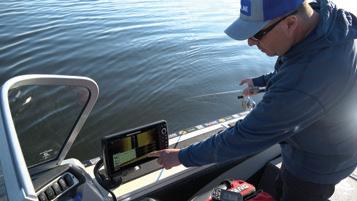
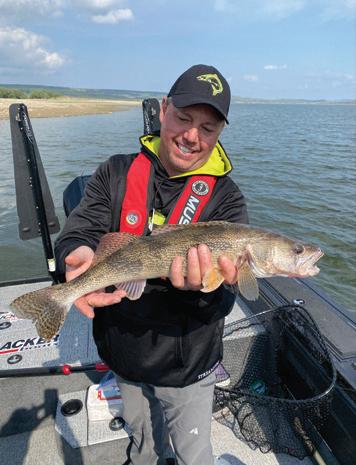
We spent two days fishing out of Kyle and Saskatchewan Landing and a total of five days fishing Lake Diefenbaker from one end to the other. We didn’t catch any eight to 12-pound walleye that Lake Diefenbaker is well known for however, we did catch both quality and quantity walleye, northern pike, perch, and sauger.
In all the communities we visited during our five days on Lake Diefenbaker, we enjoyed great accommodations, restaurants, and many friendly residents who understand how important hunting and fishing are to their local communities.
There were many times we would talk for 30 minutes with locals about everything from hunting, fishing, farming, and ranching at the boat launches, restaurants, or gas stations. I can’t wait to return to Lake Diefenbaker for some more great walleye fishing and another chance to set the hook on a Lake Diefenbaker trout. n
For more information on fishing and all the sights and activities on and around Lake Diefenbaker, contact Lake Diefenbaker Tourism. lakediefenbakertourism.com.

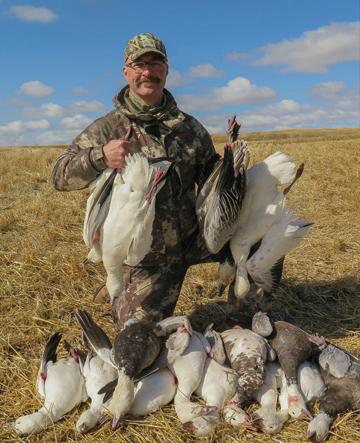
As winter melts into spring, snow geese dot the Saskatchewan skies, signaling the arrival of the white goose ‘conservation’ hunting season.
Saskatchewan is a paradise for hunters, and the spring season offers a truly unique and captivating experience for waterfowlers who are ready for an adventure. For a few weeks each spring, the central flyway becomes a staging area – a prairie pit stop – for countless geese resting and feeding before continuing their journey to their Arctic nesting grounds.
Saskatchewan’s current daily limit of 20 snow geese and no possession limit make it an ideal ‘fill the freezer’ hunting
destination – and the meat quality at this time of year is outstanding. Many snow goose populations winter along the Gulf Coast, packing on fat for migration and breeding. I think there is no finer table goose than these spring snows.
This is the perfect opportunity if you’re up for a skills test. These geese are no rookies at detecting danger. Snow goose hunters from Texas to Saskatchewan have ‘educated’ these birds, making them incredibly cautious and challenging to hunt. While I’ve had my fair share of small-scale successes, the real thrill comes from outsmarting the big flocks of gregarious geese. That’s where the pros come in. Seasoned Saskatchewan outfitters know these geese and their habits like the back of their hand. I was treated to a spring hunt with Prairie Sky Outfitters. It was epic! Let me tell you about my adventure.
One reason for booking with an outfitter is the food and accommodations. Prairie Sky knows how to do it right. The lodge features an inviting common space with a bar, dining area and fully equipped kitchen. Photos and waterfowl taxidermy decorate the lodge and tell the tales of past hunts.
I knew I had come to the right place as I walked in the door. The rich smells of lasagna and the smiles of the friendly cooking staff welcomed me. The food alone was worth the trip.
Waterfowl hunting guarantees pre-dawn wakeups. With more daylight hours in the spring, driving to the fields, setting out hundreds of decoys, and extra time camouflaging, preparation for a spring goose hunt starts hours before first light.
Shortly after 9 pm, the scouts rolled into camp, happy to share the news of tomorrow’s hunt. Good news and bad news. “We found a great shoot for the morning, but it’s about an hour’s drive.” Dry springtime conditions forced the scouts to log thousands of kilometers a week in search of prime locations. It’s another reason to hire the pros to do the heavy lifting. We made plans for a 3 am departure. It was going to be a short night, but that’s okay. Rarely do I sleep soundly in anticipation of the hunt.
The following day, we arrived on the ‘X’ – where the birds should come to feed. Judging by the feathers and droppings littering the field, the outfitter got it right. Hunters and guides hurried to place the hundreds of windsock decoys – a mix of whites and blues – around the layout blinds. I shared this experience with a few hunters from Alberta who love coming to Saskatchewan because of the blue snow geese. It is rare to see blue colour morph in Alberta, but they make up a significant proportion of the flock here.
We set most of the decoys downwind. The remainder were put behind the

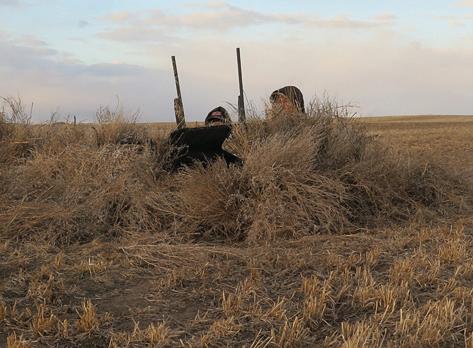
blind, creating a pocket for the kill zone. Electronic calls are allowed in spring and provide extra encouragement for the wary geese. Speakers were strategically placed to give the audio illusion of a large flock of geese. Layout blinds provide a low-profile hide with minimal shadows. It fools most geese, but from experience, our outfitter knew the blinds needed to be perfect. We brushed in the blinds with grass and straw from the surrounding field until the blinds melded perfectly into the landscape.
The trap was set! Fifteen minutes before legal hunting time, a few snow geese flew in to inspect the setup. Little did they know how lucky they were for coming early. Hearing the command “load up” was music to my ears. The fun was about to begin.
“Take these four low ones,” instructed our guide, “get ready for the three on the left”! The action was non-stop for the first hour and a half, only interrupted by the need to retrieve the dead geese.
The wind cooperated, and the steady breeze on our back positioned the new birds between 10 and 2. I focused on my lane and shot the birds to my front. There were plenty for all! The shooting slowed after the main flights were feeding in the field. I know we could have taken a few more birds if we waited. But the promise of a hot breakfast and the fact that we were close enough to our limits ended the hunt with success and a hunger for more.


Our guides found a new spot closer to camp for an evening hunt. Instead of deploying a massive decoy spread like we used in the morning, they chose a small concentration of decoys around a small slough. Kochia weed from a nearby rockpile provided the perfect cover for brushing in our blinds. We were ready by mid-afternoon and waited for the evening flight of geese. The singles and pairs that checked the decoys did it right. However, hunting is never a sure thing, especially in the spring. The big flocks stayed on the sheet water rather than flying. Nevertheless, we managed to shoot a respectable number of birds.
On the final morning, we used a tactic similar to the first day – setting up a fence line on a field where the birds were feeding. We finished the setup and nestled into the layout blinds. Minutes after the start of the hunt, a flock winged silently over the blinds, so low we could almost touch them. I was tempted to shoot but wisely listened to the guide’s words, “Wait for them to come around.” Sure enough, they banked a hard right at about 50 yards and flew directly toward us — into the kill zone. “Take ‘em, boys”! It was music to our ears. The shotguns barked, and birds fell. It was a most extraordinary experience.
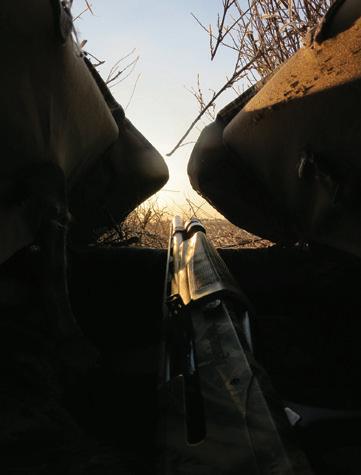
For anyone who loves hunting, the spring snow goose season offers the opportunity to kick off the hunting year in style. Saskatchewan outfitters offer world-class hunting adventures in a goose-rich environment.
On my hunt with Prairie Sky Outfitters, we never saw or heard another hunter! Talk about having the place to yourself. Perhaps it’s Saskatchewan’s best-kept secret, but I’m willing to share. You’re missing out if you haven’t tried spring snow goose hunting.
Since my first spring snow goose hunt, I look forward to doing it again. Long before the sounds of the first snow geese in March, I am giddy with the excitement of the next goose camp. n
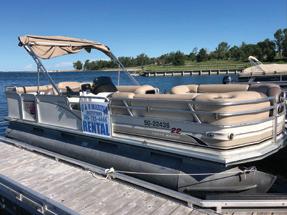
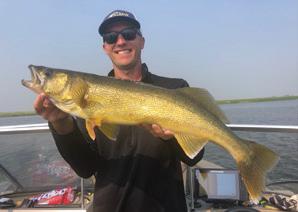

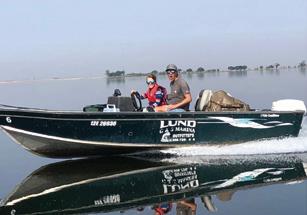
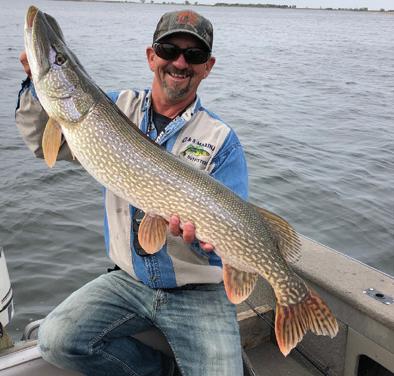
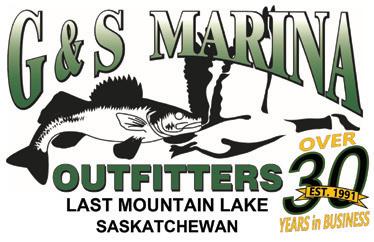
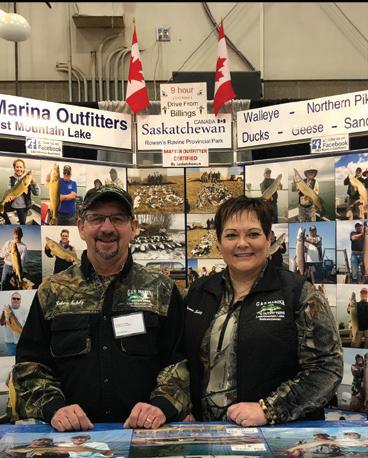
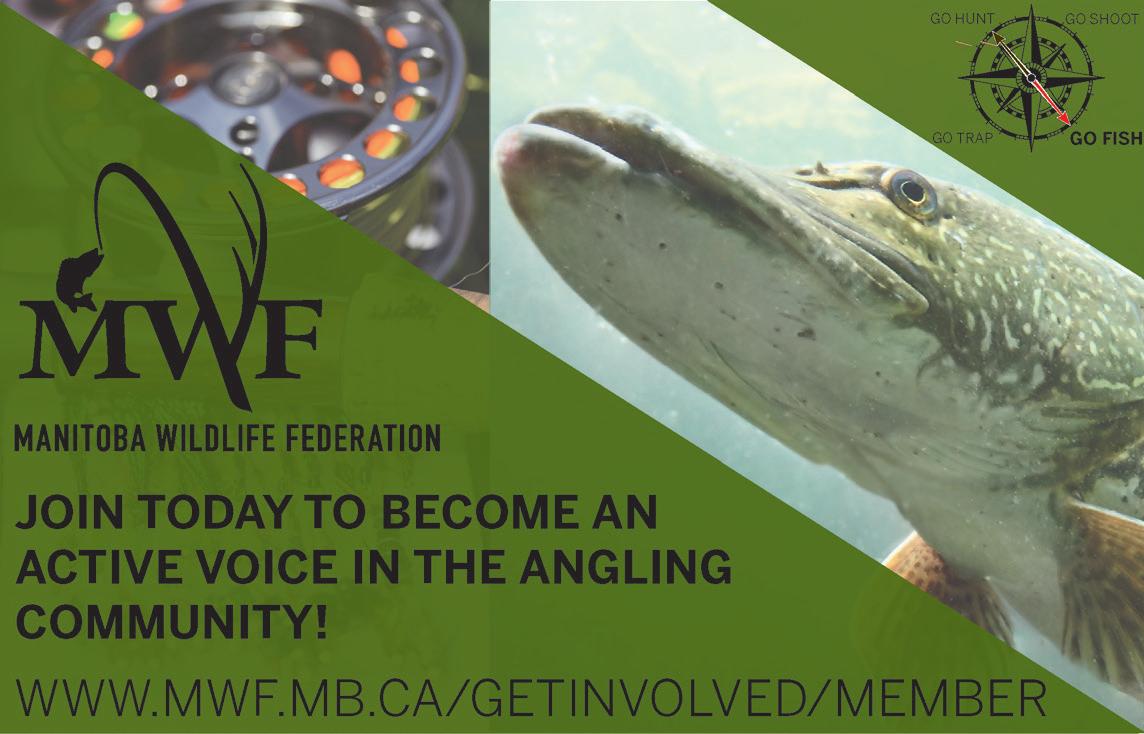
Did social media ruin the reputation of the 50” musky?
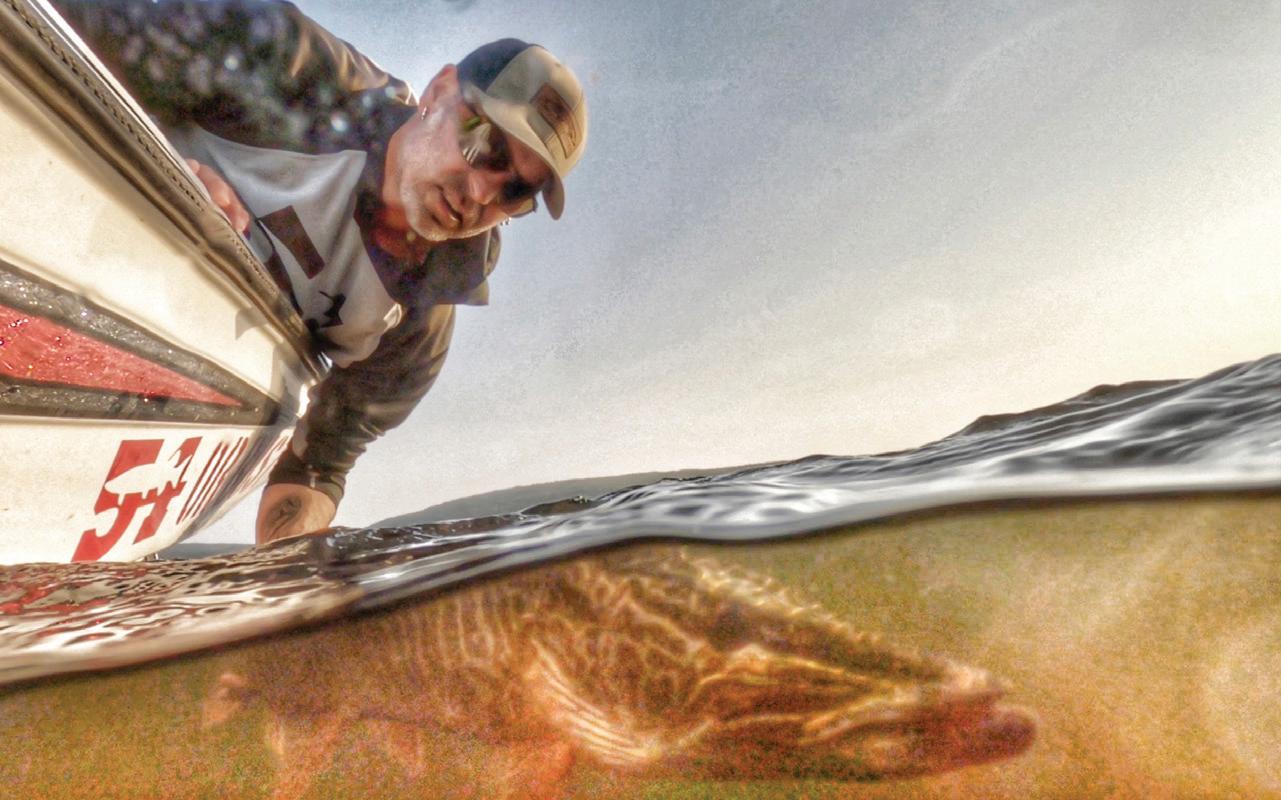 BY GLENN MCDONALD
BY GLENN MCDONALD
Did social media ruin the reputation of the 50” musky?
Sit back and think about it. Really think about it. It’s hard enough to catch a musky, let alone a fish that crosses the fifty-inch mark. Shouldn’t that be a cause for celebration?
Musky anglers, by nature, are different. They take catch and release to a whole other level; they fish all season with no intent of ever keeping a fish. Musky fishing is close to a team sport in the angling world; you work together to pursue a trophy. However, musky anglers face the challenge alone, like goalies in hockey. You win as a team and feel a loss as an individual.
The highs as a musky hunter are immense; nothing can prepare you for the emotion you feel as you pull a 40-pound fish from the net. The lows, well, they are low. Not only do you feel the pain of a zero-fish day, but sometimes even the good days turn on you.
The 50” musky has been a benchmark for years, despite most major musky waters having a possession limit of 54”. It’s a number we all chase and inevitably get judged by. To the non-musky angler, a fifty-inch fish puts you in an elite club.
For many true musky anglers, it’s just another fish.
When my wife, Kyla, and I got into chasing muskies and our friend, Dave Chaval, a fifty-inch fish was just a thought. A dream, even. But as you catch more fish and increase the size of your personal best, the question arises: when will you hit fifty?
Dave and I hit the mark fairly early on in our journey. Luckily, I have my first fifty on video, as we had just started to film as 54 or Bust. It was as exciting as I could have hoped it would be.
For Kyla, it would take a while before she felt that rush. But in the meantime, the ugly side of social media will surface. Kyla would feel it, as would most of us in the musky community.
Don’t get me wrong, as an active YouTube content creator with 54 or Bust, I love the reach of all social media. I think there are great things that come out of it. I also see the hurt it can cause. In musky fishing, everyone wants to share a photo of their catch with the world. The ‘grip-and-grin’ or ‘hero shot’ are common social media posts. Depending on the size of the catch, the nature of how you hold the fish, and
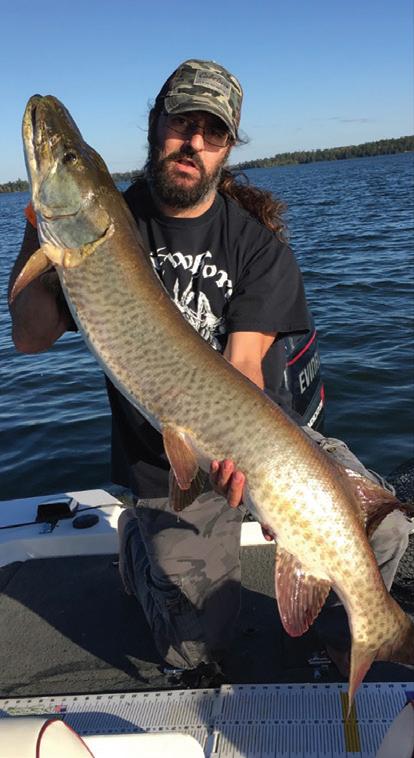

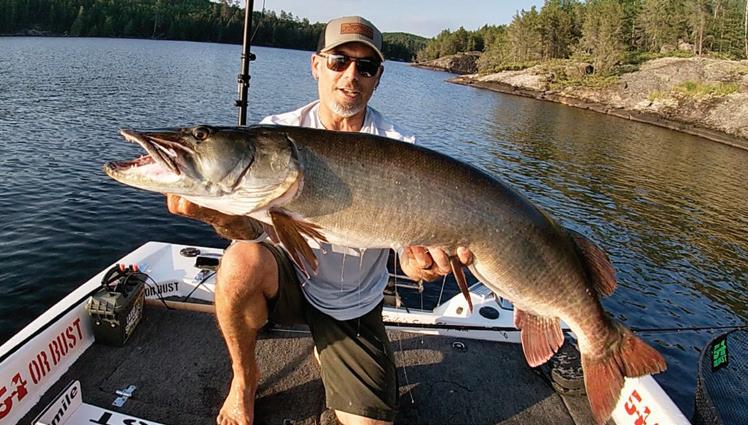
whether you show the background, someone will eventually say something negative.
For new anglers, this hurts so bad and crushes their confidence. For seasoned anglers, this usually starts an online battle. Some folks have nothing better to do than try to knock others down.
I was a guest on the Muskies on Tap podcast, where we talked about these issues. One of the hosts, Max Mantey, thought that social media was ruining the reputation of a 50” fish. That struck me. As more big fish pictures are posted on social media, it’s hard to tell one fifty-inch fish from another.
I hope most anglers will be honest enough not to claim a fish was 50”. But history tells us otherwise; the world record musky, some of the claimed modern records, are highly disputed. That’s a whole other topic.
With clever camera angles, wide-angle
lenses, and outright Photoshop, musky pictures are some of the hardest photos to judge size from. For the record, in most cases, we do not take still photos; we use a screenshot taken from GoPro or camera video footage in post-production. While some of these shots include wide-angle video, we try to be sure the photos match the video.
This is another common issue on social media. The photos look nothing like the fish caught in the videos. Forty-inch fish caught on video are photographed and manipulated to look much larger.
I was at my wife’s tackle shop, Bobby’s Sport Shop, when a gentleman recognized me, and we started a conversation. As it usually does, the topic was musky size. “How big is your personal best?” he asked me. “Fifty-one and a quarter,” I answered back. He quickly came back, with a smile: “I got a double nickel (55”) a few years ago!” At this
point, he thinks he is a better angler than me, based solely on size. I take a second and respond.
“How many do you catch each year?” An honest question I asked. A long pause was followed by, “I only get out a few times each year, about five or ten, and you?” Now I jumped in quickly and said, “On average, between fifty and seventy myself, we usually put double that in the boat.” Silence.
That right there is what happens on social media. We only see the big fish or pay attention to the big fish. The fish that is 38” and big to a new angler gets lost in a sea of posts. Or worse yet, his post gets flooded with negative comments. One of the problems is the veteran anglers, the pro-staff anglers, and the influencers, whose comments include negativity.
As a social media influencer and sponsored (directly and indirectly) angler, I take my responsibility very seriously. I strive to build a more inclusive environment for new or younger anglers. They are the future of fishing and the great outdoors. Anything we can do to help encourage people to take up fishing, we should all get behind.
Throughout our musky fishing adventures, Kyla has felt the negative side of social media. As well as peers who didn’t see her as a “musky hunter.” “Oh, they are letting you hold all the fish.” “They let you cast first.” “Why do you bother going?” She has heard it all, but to her credit, she tunes it out.
I wrote about her crazy fall of 2022, just over a year ago, in Hooked Magazine. Fifty-two and a quarter-inch musky. Fiftythree-inch bull moose. Forty-five-inch tiger musky. All within two weeks. That is ‘mic drop’ territory in my neck of the woods. She finally got the recognition she deserved. Sure, some were jealous, even mad. But I learned early on that if you have some haters, you’re doing things right.
Social media is here to stay. At 54 or Bust, we use our platform to help educate and entertain. This sport is not about me; it’s about the next angler, ready to take his or her first cast into the unknown.
I’m still chasing a 54, but I’ll never be happier than watching my girls catch their next personal best. For a full video on the subject, scan the QR code here. n
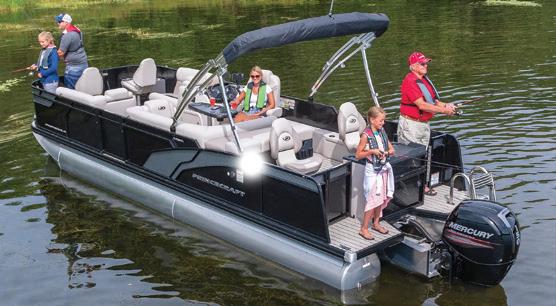





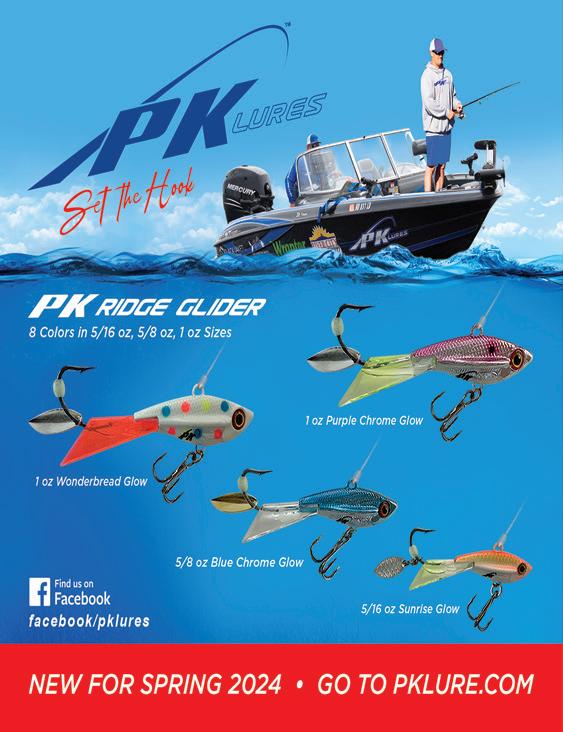

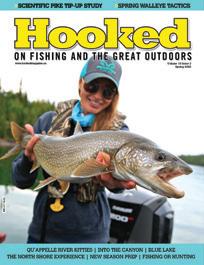
Grande: A golden dorado with a big gold flank, big head, big teeth, big mean streak, and big jumps!
BY DALE MARTENSToss an 8-inch fly into your typical trout riffle – or largemouth snag – and pull out 20-pounds of gorgeous, gold nastiness. That’s fishing for golden dorado on Bolivia’s Secure River.
From June to October, thousands of sabalo, a tullibee-sized fish, run up the river and hungry dorado follow. Untamed Angling is an outfitter that puts anglers in the middle of this mayhem.
In late August, after a night in the city of Santa Cruz, myself and a six other adventurers stood on a small airfield. Luggage surrounded us. After a police dog gave everything a good sniff, we boarded two small planes.
In a couple hours, a grass landing strip appeared among steep, jungle-covered hills. We bumped down and a friendly crowd from a nearby village greeted us. Several of the locals loaded everything into extra-long freighter canoes. A driver controlled the motor, and a spotter in the bow fended off rocks with a wood pole.
Our small flotilla arrived at the Secure River Lodge after a 10-minute ride. Rustic and comfortable, it was set on stilts to separate paying guests from high water and jungle creatures.
We were just south of the equator in the middle of the winter season. The Secure River was low and clear. Fernando was my guide and we were scheduled on the beat furthest downstream.
Our driver and spotter soon had the canoe grinding across shallow riffles and gliding over deep runs. Fernando and I had the middle of the canoe to ourselves. Occasionally, everybody would evacuate, and drag it along.
After 45-minutes, we arrived at a broad, slow portion of the Sécure River. A lot of downed timber littered the sandy bottom. The drill was to throw a massive fly as close to the wood as possible.
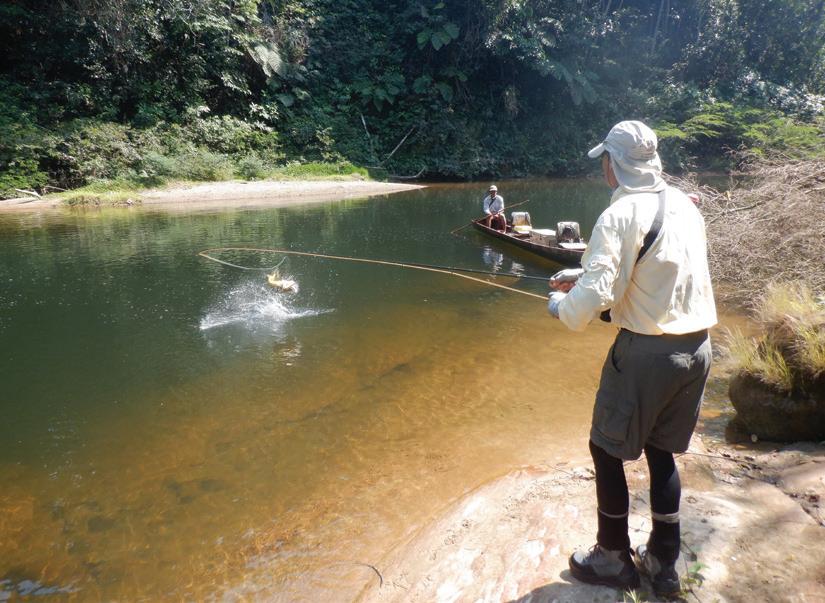
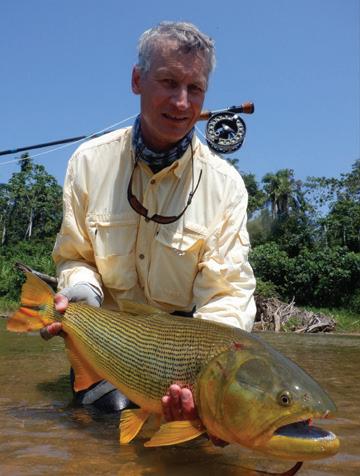
The driver and the spotter kept me a cast away from the targets. The canoe was a solid platform, so I stood up and fired away. Occasionally, we waded. To avoid quicksand and freshwater stingrays, I followed Fernando’s footsteps very precisely. Over the course of the morning, I had three grabs. Even though I religiously – even desperately – strip set, I could not connect.
Finally, just before lunch, a 5-pound dorado cartwheeled alongside a log jam with my fly and stayed attached. The leader was heavy fluoro and wire. Like most smaller dorado, the idea was keep the line tight, “bow” to the jumps, and strip it in ASAP. I did and was elated. Unfortunately the rest of the day was casting practice. But highly-motivated casting practice!
My guide for the second day was Franco. Our beat was immediately below the lodge. Besides some fallen trees, our main targets were the riffles we bumped through the previous day.
Franco had me tie on a large, black slider, and we waded them. The slider got chugged down and across boulders, seams, and eddies. I often stood well back of the water;
the first 20-feet of line fell on gravel. Dorado are quite intolerant of humans.
A couple of dorado boiled on the slider before a 4-pounder connected. It tore down the entire riffle, and then we tailed it. Like the day before, that fish ended our morning, and the afternoon was casting practice.
A 300-meter stretch of boulders and whitewater guards the beat just upstream of the lodge. While Fernando and I hiked around it, the driver and spotter did battle with the river. Unbelievably, they made it through without leaving the canoe.
Above these rapids, the Sécure River was narrow and rocky. The riffles were more turbulent, and more frequent. Pockets inside the riffles, and the buckets below them got our attention. Often, while Fernando and I chased dorado, our boat driver took out his wood bow-and-arrow and targeted sabalo, a favorite food back in the village. He put on an amazing show and rarely missed.
My only strike was unforgettable. A 5-pounder came halfway out of the water to attack the landing fly. It dove, feeling much heavier than it looked. Then a 20pound grande was wallowing on the surface with my fish in its jaws. Then both were gone. I was shell-shocked, but Fernando grinned, “Welcome to Jurassic Park!”
I was paired with Milton and with a grin, he said, “Today we’ll go upstream and sight fish some pools.” Again, I admired our boat handlers’ skill while we hiked around the whitewater entrance to the upper river. We fished selected pockets on
our way upstream. A 5-pound dorado obliged us. Finally, we passed a lodge outpost used for overnight expeditions.
Here, the Sécure was a continuous riffle, punctuated by deep pools every few hundred meters. The canoe was beached; Milton and I started to walk. And walk. And walk. The scenery was spectacular, with low mountains in the distance. But most of the time, I watched Milton’s feet. He was setting a blistering pace, and – to avoid twisted ankles – I desperately tried to put my feet where he put his.
Every half-kilometer or so, we surveyed a transparent pool. A couple of them held dorado – grandes! We watched them cruise, always a long cast away and completely indifferent to my fly. It was very humbling. And a long way back to the canoe.
Fernando and myself were back on the lower beat. Everyone else in camp had caught a grande or two, and now I really wanted one. Just before lunch, Fernando tied a baby dorado fly – his own creation – onto my leader. We worked a deep hole adjacent to a log jam. The new fly was a game-changer. My rod doubled over and a slab of gold thrashed on the surface. It was a legitimate grande! (At least in my mind. In reality, it was probably on the low end of the grande scale.) Fernando tailed it and we high-fived. After it swim away. Fernando held out the baby dorado and proclaimed, “Retire this! Put it on your desk!”
Franco and I headed upstream to explore a tributary. It was about the size of Alberta’s Racehorse Creek. We skipped over deep, slow sections. Instead, we focused on the quick, narrow chutes that looked like a trout stream.
The drill went like this… After beaching the canoe, Franco and I would approach a tiny pool below a riffle. There were usually some overhanging trees. The water was at most thigh deep. We always stopped at least 20-feet from the creek. I would sling in a side-arm cast and start stripping before the fly hit the water. Eventually, my fly touched down and chaos erupted. The line went tight as a large wake headed upstream and then downstream towards the canoe. It didn’t stop until I was well into my backing. The fish, definitely a grande, finally went airborne about 30-feet from my rod tip. Luckily, the hook held and Franco tailed it soon after.
Warning: Purists should NOT read the remainder of this paragraph. On the way back to camp, Franco had me speed casting. Although dorado are wary of humans, they are attracted to an outboard’s gurgle. As the boat churned down the Sécure’s middle, I launched casts towards the bank. The fly would slide in behind the boat, and I would cast again. It was motorized swinging, and led to a vicious take by a smaller dorado, which got roughed up by
a larger dorado on its trip to the boat. We witnessed the large gashes in its side.
Obviously, fishing for dorado is not a numbers game. I landed about one fish per day. But anticipation levels – and adrenaline jolts – were off the charts. It is like fishing for trout in a riffle, bass in the timber, or permit on a flat, and catching something that jumps like a tarpon – only meaner and more exotic. n

Scan the QR code to learn more.
HuntFishMB Recipes

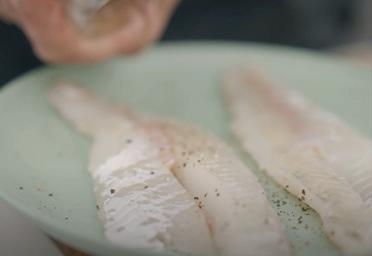


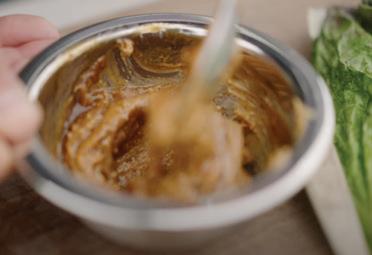

 BY JOSH MCFADDIN
BY JOSH MCFADDIN
If you’ve ever set foot into a Vietnamese restaurant, you’ll know that the salad rolls, typically stuffed with shrimp, BBQ pork or both, are an absolute must-have. If you have yet to try salad rolls, you will make this recipe and never regret it. I’ve long been a fan of any style of a salad roll. They’re lite, jam-packed with exotic flavour and will punch you right in the mouth with a hit of vibrant freshness. It’s easy to prep all of these ingredients ahead of time as well, to be assembled and enjoyed really anywhere.
You can feel free to use any fish for this recipe, but with walleye being the most popular fish to eat, I find that the fisher folks I know, as well as myself, are always looking for new ways to consume this rather mild wild flesh and this is most definitely a method you’ll try more than once.
• 2 walleye filets
• 1 package of rice paper
• Rice noodles
• Thinly sliced carrot strips
• Thinly sliced cucumber strips
• Lettuce, romaine or iceberg
• Herbs: mint, cilantro and Thai basil if available
• Hoisin sauce
• Peanut butter
• Salt + Pepper
• Start by pouring boiling water over the rice noodles and letting them sit for a minute, until soft. Strain the water and set it aside.
• Then salt your walleye. Coat the meat generously and set aside for 10-15 minutes, then rinse in cold water and pat dry. This salting step can be skipped but it helps to firm up the texture of the meat nicely.
• Season the walleye with pepper and place in a hot pan, with a touch of oil and sear until cooked through. Then set aside to cool.
• Add warm water to a shallow dish. You’ll use this water to soften the sheets of rice paper.
• One at a time, place a sheet into the water and let sit for a few seconds until soft. It does not take long for them to soak up water to become soft and sticky, so keep an eye on them and handle them with care.
• With the softened rice paper lying flat, start filling the roll with ingredients, lengthwise and just off of the center.
• Once you’ve whipped up a batch, serve them to your friends with a side of peanut hoisin sauce made from mixing equal parts peanut butter and hoisin sauce and enjoy!

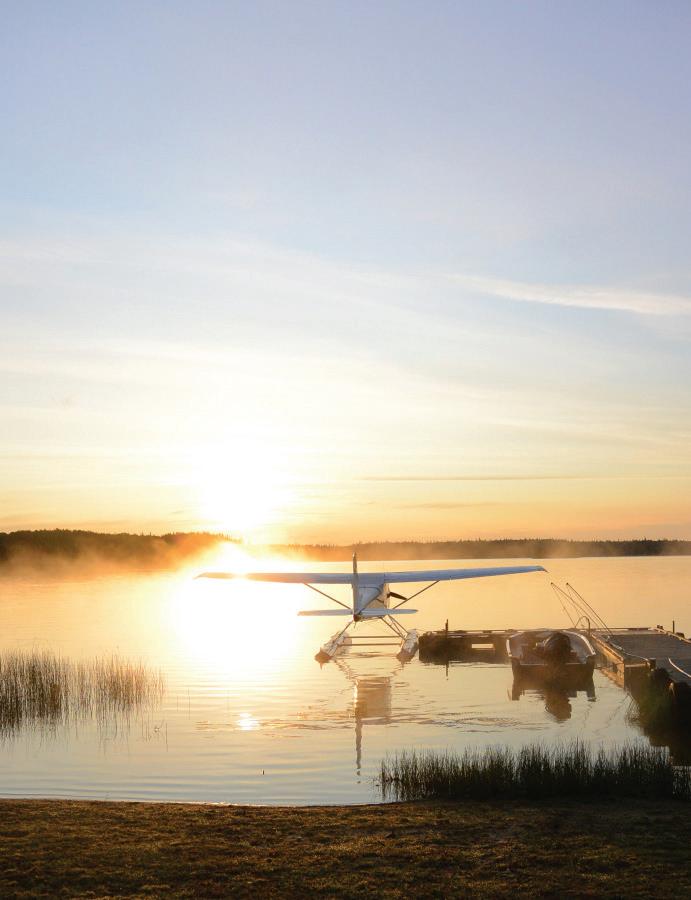
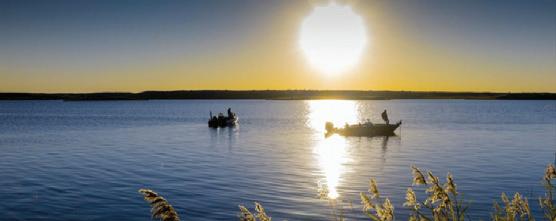
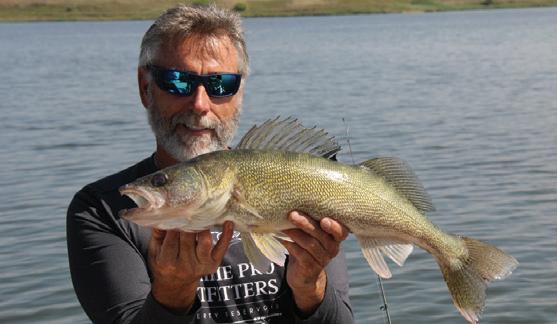
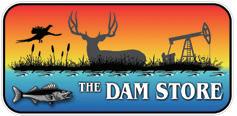




They were easy to spot with the electronics on my boat and after the four-hour run around, I had around 50 piles found.
It was just a fun week of fishing is the best way I could describe it. I was fishing in a tournament the first week of April with a unique format that included no practice, no waypoints and could not use forward-facing sonar. It was the first ever event put on by the Touring Angler’s Association. I fished it and had a great time.
Prior to the start of the three-day tournament, we got four hours to look around on Lake Lanier, but we were not able to fish. Having fished at Lanier several times in the past, I had a pretty good idea of the areas that I wanted to look around in and what I would do in the tournament, focus on fishing deeper water for spotted bass.
There are brush piles everywhere in this lake, in fact, it’s encouraged for anglers to put out brush piles to improve habitat for fish. These piles are found in anywhere from ten to forty feet of water and many of them hold fish throughout the year. I spent my four hours idling around and marked as many of these piles as I could.
It is springtime in the south and the bass are going through the spawning cycle in many areas of the country, including around Lake Lanier. When I finished up with the pre-tournament ride-around, I went for dinner with fellow Canadian anglers Chris and Cory Johnston and they mentioned that they found a lot of largemouth bass shallow around spawning areas. Choosing not to check that during the ride-around, I decided I would stick with my game plan of fishing for spotted bass, which has worked well for me here in the past.
The first day went well and I managed to bring 18 pounds to the scale, but I was in the middle of pack. Chris Johnston took the lead with a limit weighing nearly 25 pounds, all largemouth bass. Lanier is known as one of the best spotted bass fisheries in the United States and they win most of the tournaments on this lake, except for a couple weeks each year when the largemouths move shallow to spawn. Unfortunately for me, that’s what happened this week. There were several big largemouths brought in each day.
The format for the tournament was that the full field would fish the first two
days, then the field would be a cut to the top twelve anglers who would go out for a third day. After sitting in 20th following day one, I had a slightly better second day and slid up into the cut in 10th place. I managed to wrangle up another solid limit on day three and finished up in 8th place, so it was a successful week.
Chris Johnston ended up winning the tournament and it’s $65,000 pay day, as well as the big bass of the tournament.
He landed an eight-pound largemouth on Day Two, dominating the tournament, leading it from wire-to-wire.
There has been a lot of negativity lately surrounding the use of forward-facing sonar and I want to make it clear that I did not fish this event because I don’t like using it. I love using it. There is no doubt that you’ll catch more fish with it and it’s incredibly fun to watch your bait as you fish and see how fish interact with it. I just live for competing in fishing tournaments and will show up regardless of the format if I can make it. Lanier is one of my favourite places that I’ve ever fished so it was an easy decision for me. For fishing in deeper water like I did, it was certainly more challenging fishing with traditional sonar but we made it work.
This week I am in Florida to resume my Bassmaster Elite Series season on the Harris Chain of Lakes. It’s a place that I’ve had some success at in the past so hopefully I can make it happen again. n
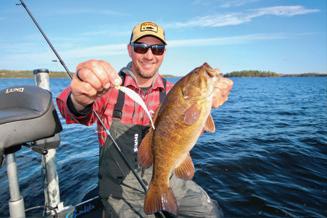


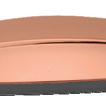

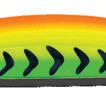
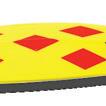


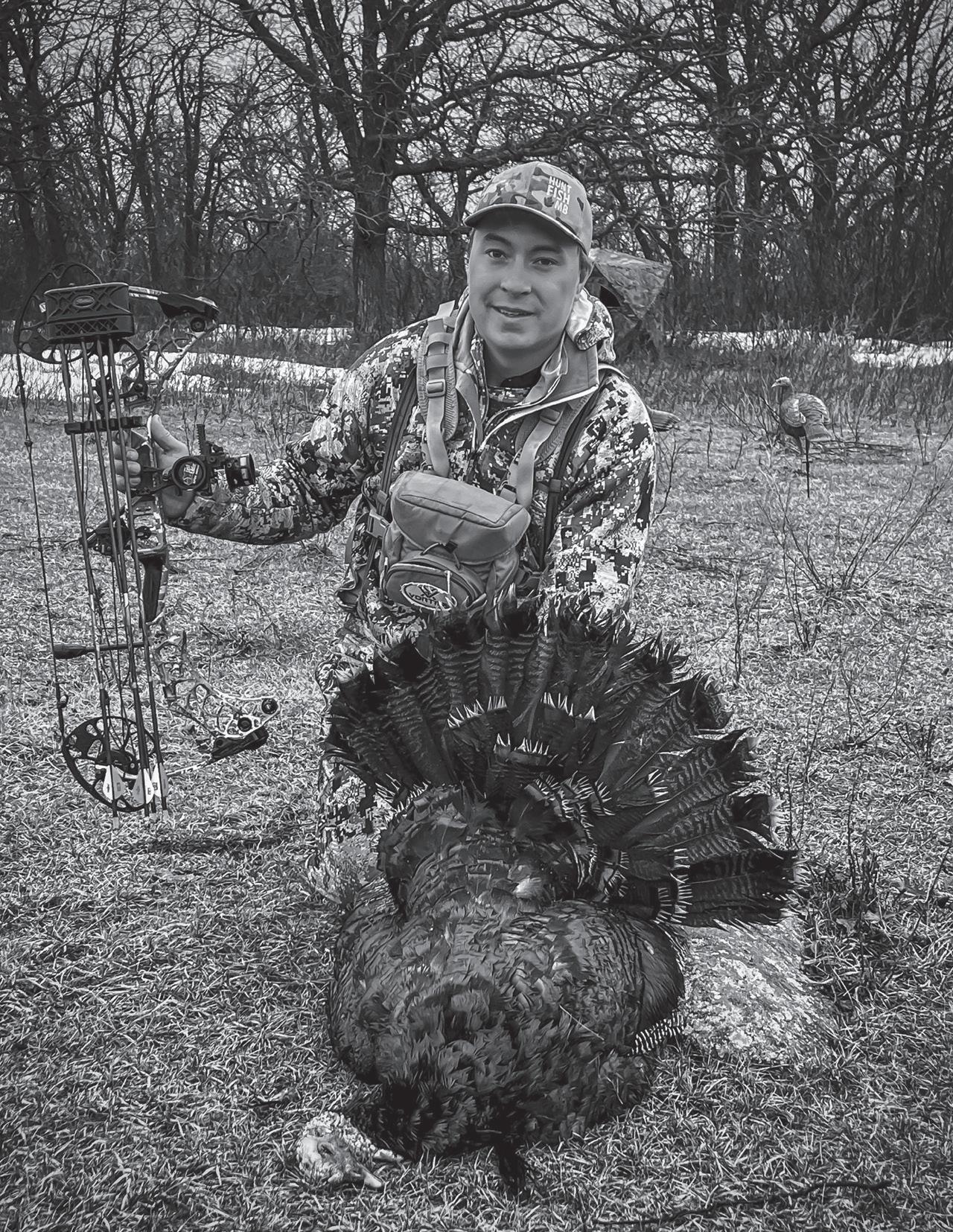
HuntFishMB | Hunt Fish Consultant
Keevin is a passionate hunter and angler with a love for filming, photography, and writing. His extensive experiences in Manitoba’s wilderness have ingrained within him a deep love for this province and its wilderness. As an experienced outdoors enthusiast, Keevin enjoys big game hunting the most, with the pursuit of elk and whitetail deer at the top of his list. However, black bears, waterfowl, moose, caribou and turkey hunting hold a close place in his heart as well. He is also a passionate angler and spends his free time on the water or the ice across the province, with his home waters of Lake Manitoba being his favourite. Keevin also loves to share his hunting and fishing stories across various platforms in hopes of teaching and inspiring the next generation of outdoor enthusiasts. Whether in the woods, in the field, on the water, or the ice, Keevin’s enthusiasm for the outdoors is contagious.


the


